DAMS & RESERVOIRS
Constructing the iconic Yusufeli Dam
WATER & WASTEWATER


The road to water digitisation
Sustainable and striking structures built to last in wire and stone
LEGAL EPC versus EPCM contracts
RENEWABLE ENERGY & ELECTRIFICATION
Loadshedding and recovery
OEM leaders in pump operations and maintenance
IMESA The official magazine of the Institute of Municipal Engineering of Southern Africa www .imesa.org.za INFRASTRUCTURE DEVELOPMENT • SERVICE DELIVERY • ROADS • BUILDING • MAINTENANCE • ENERGY ISSN 0257 1978 Volume 47 No. 01 • January 2022 • R55.00 (incl. VAT) ISSN 0257 1978 Volume 48 No. 08 • September 2023 • R55.00 (incl. VAT)
John Montgomery GM for APE Pumps and Mather+Platt
INDUSTRY INSIGHT
GABION
BASKETS
THE MOST EFFECTIVE SOLUTION
TOM® PVC-O PIPES
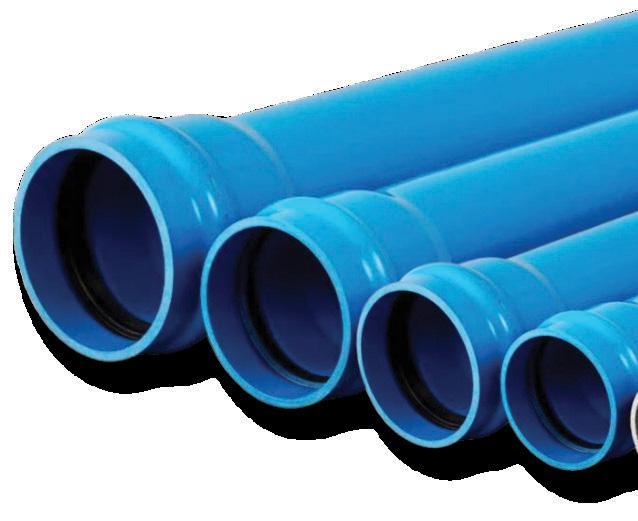
TOM® PVC-O pipes are a product developed exclusively with the Molecor innovative technology that provides the highest Molecular Orientation. The manufacturing process is continuous and completely automatic, which ensures the maximum product reliability and a quality control tube to tube for the 100% of the production.
Best Solution
TOM® is the best solution for the conveyance of water at medium and high pressure for irrigation systems, drinking water supply, reuse, industrial or fire protection lines, among other uses. The extraordinary technical advances of the manufacturing system of Molecor confer the TOM® Oriented PVC pipe significant improvements.
Main advantages
• Cost efficiency: Manual handling up to DN350 mm
• Natural resources Usage optimization: Optimization of the use of natural resources and 100% recyclable

• Energy efficiency: Lower energy consumption throughout the life cycle
Polyvinyl chloride (PVC) is essentially an amorphous polymer in which molecules are aligned at random. However, by stretching the material and under certain conditions of pressure, temperature and speed, the polymer molecules can be aligned in the same direction as it has been stretched.



www.sizabantu.com | proudly@sizabantu.com

A leader in its field, Gabion Baskets continues to push the boundaries of product innovation, backed by in-field experience and a unique ability to develop structures that set new industry benchmarks for form and function. P6
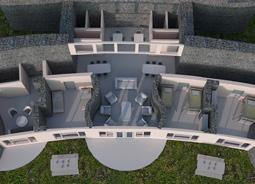
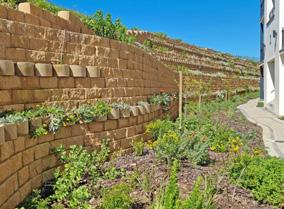
INDUSTRY INSIGHT


Two key issues are central to the turnaround of underperforming water and wastewater infrastructure within municipalities, namely proactive asset management, along with a well planned and executed operations and maintenance (O&M)
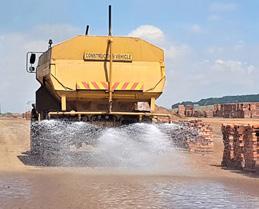



IMIESA speaks to John Montgomery, general manager for APE Pumps and sister entity Mather+Platt (the Group) about how their turnkey OEM solutions are making a difference.


Excellent progress reported on regional SANRAL projects 31 Water & Wastewater Where are you on the road to water digitisation? 32 Amphibious pumps for diverse applications 33 Recycle and reuse water to save the planet 34 Pipe Systems Nationwide campaign drives home the value of plastic pipe 35 South African Vinyls Association (SAVA) “Innovation in PVC” conference showcases local and global excellence 36 Renewable Energy & Electrification Establishing the Phezukomoya Wind Energy Facility 37 South Africa’s loadshedding woes and its path to recovery 38 Waste Management Office waste segregation qualifies for carbon offsets 41 Cement & Concrete Site visits help CCSA members maintain quality in construction 42 AfriSam lab passes SANAS recertification with flying colours 43 50 years of best practice in precast 44 Vehicles & Equipment Battery powered forklifts are the future 45 Gauteng sand operation ramps up production 47 Solar powered light tower provides sustainable solution 48
INSIDE OEM leaders in pump operations and maintenance John Montgomery INDUSTRY INSIGHT MESA IMESA The official magazine of the Institute of Southern Africa www.imesa.org.za RENEWABLE ENERGY & ELECTRIFICATION Loadshedding and recovery WATER & WASTEWATER The road to water digitisation LEGAL EPC versus EPCM contracts DAMS & RESERVOIRS Constructing the iconic Yusufeli Dam structures built to last in wire and stone GABION BASKETS ON THE COVER www.imesa.org.za Regulars Editor’s comment 3 President’s comment 5 Index to advertisers 48 Cover Story Sustainable and striking structures built to last in wire and stone 6 Legal Which is better for construction and mining projects – EPC or EPCM contracts? 10 Spatial Development & Planning Urban decay puts Joburg’s CBD in the spotlight 12 Industry Insight OEM leaders in pump operations and maintenance 14 Dams & Reservoirs Turkey’s Yusufeli Dam is one of history’s most iconic structures 16 Lesotho Highlands Phase II has a core focus on community and the environment 20 Precast Retaining Systems Mixed pattern wall design retains steeps slopes, with easy planting 24 IMESA Creating the future networks and connecting the dots 26 KwaZulu-Natal Golf Day 28 Women’s Day Celebrations 28 Training & Development Finance and oversight course empowers iLembe leaders 29 Roads & Bridges Cost effective dust suppression for unpaved routes 30 30 ROADS & BRIDGES PRECAST RETAINING SYSTEMS 24 21 VOLUME 48 NO. 08 SEPTEMBER 2023
P14
EARLY BIRD REGISTRATION
Register and pay BEFORE 31 July 2023

• Members: R6 700
• Non-members : R8 000

BOARDWALK HOTEL Gqeberha (Port Elizabeth)








STANDARD REGISTRATION







Register and pay AFTER 1 August 2023

• Members : R7 500
• Non-members : R8 900
HOTELS WITHIN CLOSE PROXIMITY OF THE BOARDWALK HOTEL (IMESA will provide a shuttle service to and from the hotels listed below)


t: +27 (031)266 3263


e: conference@imesa.org.za marketing@imesa.org.za

www.imesa.org.za

25-27 October 2023
IMESA ORGANISER THE INSTITUTE OF MUNICIPAL ENGINEERING OF SOUTHERN AFRICA (IMESA) CONFERENCE ENDORSED BY BOOK YOUR accommodation NOW
86 TH IMESA Conference
Road Lodge 100m from venue Town Lodge 430m from venue Beach Hotel 100m from venue Protea Marine Hotel 900m from venue Courtyard Hotel 100m from venue Chapman Hotel 1,1km from venue City Lodge 380m from venue Garden Court 1,3km from venue
EDITOR Alastair Currie

Email: alastair@infraprojects.co.za
DESIGNER Beren Bauermeister
CONTRIBUTORS Alex Goddard, Chetan Mistry, Sibusiso Mjwara, Bryan Perrie, Patrick Prestele, Natalie Reyneke
DISTRIBUTION MANAGER Nomsa Masina
DISTRIBUTION COORDINATOR Asha Pursotham
SUBSCRIPTIONS
Email: IMIESAdistribution@infraprojects.co.za
ADVERTISING SALES

KEY ACCOUNT MANAGER Joanne Lawrie
Tel: +27 (0)11 234 0825 / +27 (0)82 346 5338
Email: joanne@infraprojects.co.za
Every well executed infrastructure project makes the difference
Within the Southern Hemisphere, Phase I of the Lesotho Highlands Water Project (LHWP) – completed in 2003 and inaugurated in 2004 – was one of history’s landmark developments, only potentially to be eclipsed in Phase II by the works in progress for the construction of the Polihali Dam and transfer tunnel, plus associated works. We cover some of the findings on Phase I that influence Phase II in this issue.
PUBLISHER
IMESA (Pty) Ltd
P O Box 2190, Westville, 3630
Tel: +27 (0)31 266 3263
Email: info@infraprojects.co.za
ANNUAL SUBSCRIPTION: R600.00 (INCL VAT)
ISSN 0257 1978 IMIESA, Inst.MUNIC. ENG. S. AFR.
© Copyright 2023. All rights reserved.
IMESA CONTACTS
HEAD OFFICE:
Manager: Ingrid Botton
P.O. Box 2190, Westville, 3630
Tel: +27 (0)31 266 3263
Email: admin@imesa.org.za
Website: www.imesa.org.za
BORDER

Secretary: Celeste Vosloo
Tel: +27 (0)43 705 2433
Email: celestev@buffalocity.gov.za
EASTERN CAPE
Secretary: Susan Canestra
Tel: +27 (0)41 585 4142 ext. 7
Email: imesaec@imesa.org.za

KWAZULU-NATAL
Secretary: Narisha Sogan
Tel: +27 (0)31 266 3263
Email: imesakzn@imesa.org.za
NORTHERN PROVINCES
Secretary: Debbie Anderson
Tel: +27 (0)83 326 3050
Email: np@imesa.org.za
SOUTHERN CAPE KAROO
Secretary: Henrietta Olivier
Tel: +27 (0)79 390 7536
Email: imesasck@imesa.org.za
WESTERN CAPE
Secretary: Michelle Ackerman
Tel: +27 (0)21 444 7112
Email: imesawc@imesa.org.za
FREE STATE & NORTHERN CAPE
Secretary: Wilma Van Der Walt
Tel: +27 (0)83 457 4362
Email: imesafsnc@imesa.org.za
Another more recent and completed example that we also cover in this edition is the new Yusufeli Dam, now the highest in Turkey and the fifth highest double curvature arch structure of its kind in the world. The ARQ-Su Yapi team for the dam design was led by Dr Quentin Shaw of ARQ Consulting Engineers, based in Pretoria. It recently won the Best International Project category at the 2023 CESA Aon Engineering Excellence Awards.
Mega projects like the LHWP (Phase I and II) and the Yusufeli dam take years of planning and international funding preparation, and their establishment helps to provide longer-term water security for generations to come. However, the same is true for water and wastewater projects of all sizes – extending from new and replacement pipelines, to upgraded pump stations, and refurbished treatment works.
Every project in integrated
Even the smallest “non-mega” infrastructure upgrade makes a huge difference in the lives of communities when it comes to ensuring safe potable water and sanitation. And ultimately, all mega water projects ensure that every municipality and consumer have service delivery at the turn of a tap for drinking water, and sustained flushing when it comes to waterborne sanitation.
In South Africa those priorities keep growing –particularly on the sanitation side – underscored by the fact that only 23 out of close to 1 000 wastewater treatment plants across South Africa met the minimum 90 percent scoring requirement to qualify for Green Drop Certification.

Funding from the South African fiscus has been constrained for years, but despite this, the Department
of Water & Sanitation’s commitment to priority projects saw the allocation of around R40,3 billion for the 2023/24 financial year, and R43,9 billion and R48,4 billion for the 2024/25 and 2025/26 financial periods.
However, budgeted numbers have always been based on assumptions, like forecasted tax revenues collected, which strongly influence actual expenditure available. On 01 November 2023, the infrastructure sector in general will have a clearer understanding of what’s on the table over the next three years when South Africa’s Minister of Finance, Enoch Godongwana, delivers the Medium-Term Budget Policy Statement in parliament.
PPPs need guarantees
As we’ve seen from the Renewable Energy Independent Power Producer Procurement Programme, the local and international private sector does have the appetite to invest in bankable public private partnership (PPP) projects at mega scale. The key challenge at present is the length it takes to get approval. But perhaps even more importantly is the need for a government focus on PPPs at “micro scale” because this is one of the paramount priorities right now.
Either way, at local government level, the overriding mandate should be on ensuring that each municipality achieves its own financial independence through the effective delivery of the infrastructure services it sells to households and industry.
That requires strong leadership, expertise in engineering and finance, plus the integration of technologies that work. The latter include smart metering for water and electricity, Geographic Information Systems for real-time land and asset management, plus the latest in ICT.
Navigating the infrastructure landscape is a team effort that cannot isolate engineering from finance. Collectively, we need to plan the flight, and fly the plan together.
Cover opportunity
IMIESA September 2023 3
EDITOR’S COMMENT To our avid readers, check out what we are talking about on our website, Facebook page or follow us on Twitter and have your say.
Alastair
In each issue, IMIESA offers advertisers the opportunity to get to the front of the line by placing a company, product or service on the front cover of the journal. Buying this position will afford the advertiser the cover story and maximum exposure. For more information on cover bookings, contact Joanne Lawrie on +27 (0)82 346 5338. pump operations and maintenance John Montgomery INDUSTRY INSIGHT MESA IMESA of Municipal Engineering .imesa.org.za INFRASTRUCTURE DEVELOPMENT SERVICE DELIVERY ROADS BUILDING • MAINTENANCE • ENERGY RENEWABLE ENERGY & ELECTRIFICATION Loadshedding and recovery WATER & WASTEWATER The road to water digitisation LEGAL EPC versus EPCM contracts DAMS & RESERVOIRS Constructing the iconic Yusufeli Dam Sustainable and striking structures built to last in wire and stone GABION BASKETS The ABC logo is a valued stamp of measurement and trust. IMIESA is ABC audited and certified.
All material herein IMIESA is copyright protected and may not be reproduced without the prior written permission of the publisher. The views of the authors do not necessarily reflect those of the Institute of Municipal Engineering of Southern Africa or the publishers.
www.imesa.org.za
IMESA imesa_za imesa
SUPPORTING THE LIFECYCLE OF WATER
We enable our customers to drastically improve the way water and wastewater are managed, conserved, reused, and returned to nature.
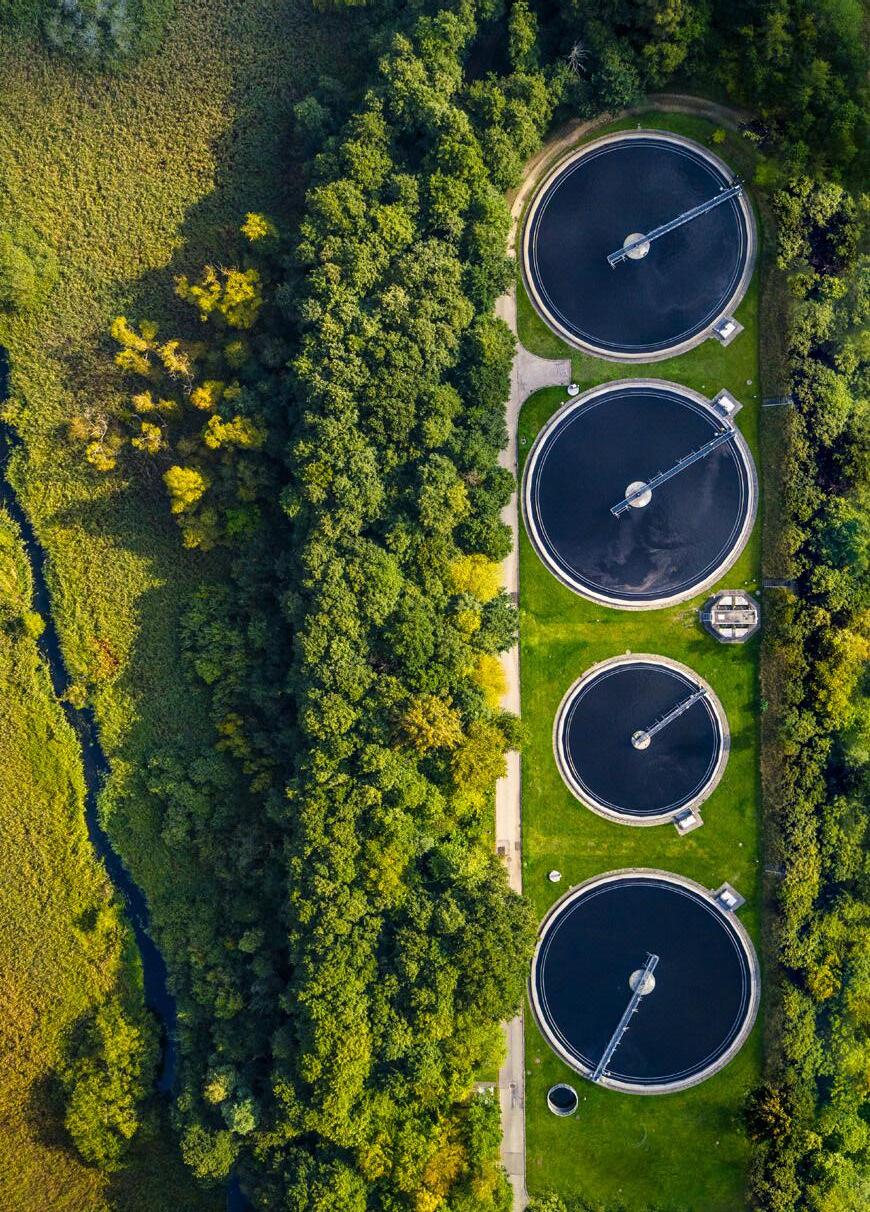
Innovative, smart technology solutions for water and wastewater



Proven expertise across industries and the water cycle
Unmatched service and customer support



Find out how we can solve water together.


INFRASTRUCTURE INVESTMENTS AND ASSET MANAGEMENT

In August, I had the privilege of representing South Africa, and the associated Southern African countries that form part of the International Federation of Municipal Engineering (IFME) – namely Botswana, Namibia, and Zimbabwe – at IFME’s second of two board meeting for 2023.
Held on 29th August in San Diego, this meeting coincided with the 2023 Public Works Expo (PWX), which was organised and hosted by the American Public Works Association (APWA) and attracted some 6 000 delegates from across America and the globe.
PWX was a great gathering of some of the foremost thought leaders in municipal engineering and certainly an excellent networking experience. One thing is clear from the presentations: irrespective of our developed or developing nation status, every country – to a greater or lesser degree – faces common challenges such as climate change, burgeoning population growth, and a massive urbanisation shift.
For this reason, there’s a constant need to advance the infrastructure agenda as a core socioeconomic priority. To make that happen in practice requires constant lobbying at the highest political decision-making levels and not just in South Africa, as Scott Grayson, chief executive officer of the APWA and the Canadian Public Works Association (CPWA) pointed out at PWX, and last year during his presentation at IMESA’s 85th Annual Conference in Johannesburg.
Alignment and unification
Scott’s leadership via the APWA and CPWA has been instrumental in drawing attention to and prioritising infrastructure budget allocations from within the US Congress, Canadian parliament, and federal and provincial/state branches of government agencies in both countries. One of the key success factors has been effective alignment and unification, something we need to focus on more so that our various voluntary associations speak with one voice on pressing built environment issues.
IMESA is in a unique position to do so because it represents municipal engineers from across the civil, electrical, mechanical, and related disciplines at local government level. That’s great in terms of engineered outcomes, but we also appreciate that if councillors, financial officers, and municipal managers are not on the same page, we have a disconnect that can and does derail service delivery. Not just in terms of poor execution, but from a revenue perspective.
So IMESA is on a mission to increase its level of interaction with all public sector stakeholders –from National Treasury to the South African Local Government Association and the Department of Public Works and Infrastructure – to make sure our message is heard, understood, and actioned.
A stitch in time saves nine
Central to everything is asset management (AM), dovetailing with operations and maintenance (O&M). These were also key interrelated themes at PWX and mirrored at our own IMESA conferences.
As a general rule around 8% of budgeted infrastructure expenditure in any year should be allocated to AM. However, that isn’t happening in South Africa. And timing is another factor since
as maintenance backlogs grow and money becomes scarcer, it triggers a catalytic downward spiral of infrastructure decay that plays havoc on business and society. Loadshedding is a case in point.
As part of IFME’s Technical Committee, we had the opportunity to present and engage on wide ranging issues at PWX and it’s clear that each country has its own stages of maturity in applied AM. The consensus is that for AM to work optimally, the process must start at the design stage to optimise life cycle costing and the return on investment. However, the foremost priority is to maintain existing services effectively because we all know it costs far more to replace, say, a road or a wastewater pump installation.
Austerity measures
For this reason, we are concerned about the National Treasury’s recent proposal that a freeze be placed on new infrastructure procurement due to a contraction in tax revenues. That’s not where budgets should be cut, because it has a counterproductive effect on micro and macroeconomic performance.

It is a very tough global economic climate out there at present, and that’s reflected within our IFME community. However, as municipal engineers we know that without enabling infrastructure we don’t have an economy that works. Plus, flood damaged regions across the country, including eThekwini, still haven’t recovered and restored all their assets. And what about the recent damage caused by a gas pipeline explosion in Johannesburg’s CBD?
So, following the APWA example, IMESA’s mandate is to ensure that austerity measures don’t impede service delivery. Let’s rather focus on eradicating fruitless and wasteful expenditure.
IMIESA September 2023 5
PRESIDENT’S COMMENT IMESA
Sibusiso Mjwara, PrTechEng, MIMESA, MSAICE, MWISA, MIPET
Sustainable and striking structures built to last in wire and stone
A leader in its field, Gabion Baskets continues to push the boundaries of product innovation, backed by in-field experience and a unique ability to develop structures that set new industry benchmarks for form and function.


The company was founded 17 years ago in 2006 as a specialist manufacturer in hexagonal double-twisted wire mesh systems, employed worldwide for well over 100 years to form gabion infrastructure predominately used for civil engineering


roles like mass gravity retaining walls, and river erosion works.

A more modern, and parallel development is the introduction of welded mesh products that can meet civils specifications but are predominately used for architectural applications that include interior and
exterior building cladding, reception desks, freestanding walls, landscaping, and allied designs that naturally enhance the aesthetic appeal of these rock-filled structures.
6 IMIESA September 2023 COVER
STORY
A virtual rendition of a gabion river wall retaining system
GABION ANIMATION


Gabions Baskets’ traditional 2D design services have evolved to encompass 3D animation, enabling clients, architects, engineers and contractors to obtain a virtual perspective and refine their requirements accordingly.
The latter include security and pedestrian barriers, and anything in between. A great example is Gabion Baskets’ launch of its Fire Pit range – essentially a welded mesh circular design that creates a unique entertainment feature for residential and allied commercial applications, such as guest lodges.
National manufacturing centres
Gabion Baskets’ main manufacturing centre is based in Johannesburg, supported by its satellite fabrication facilities in Durban and Cape Town. “In the past, all standard
Further down, an existing pedestrian bridge was rehabilitated by creating a new inlet and outlet culvert on either side. Lowering the height of the bridge and creating a concrete capping walkway allows the water to flow over the bridge if the existing pipes get blocked due to debris or extensive water volumes.
CASE STUDY: RIVER EROSION WORKS
and custom project-related orders were made in Johannesburg for on-site delivery, with Durban and Cape Town only receiving raw woven and welded mesh materials for onward sale to local assemblers,” explains Louis Cheyne, managing director, Gabion Baskets.
“We’re now closing that loop to ensure customers can order ‘ready to assemble’ kits from all three facilities, thanks to recent expansion activities that include a move to a new building for our Durban operation.
“Aside from shorter lead times – so critical for just-in-time construction delivery – the

Gabion Baskets’ Durban office recently provided a design recommendation and installation solution within the Mount Edgecombe Estate 2. The scope entailed the rehabilitation of a small river channel and associated low level road bridge crossing. Generally during normal light rain, stormwater flows are low. However, due to current road construction works on the neighbouring N2, this has increased significantly, overwhelming the capacity of the channel.
The solution entailed the installation of gabion mattresses – resting on a geotextile liner (an essential requirement) – to create a free-flowing channel. This measures 35 m in length and 2 to 3 m in width. A new gabion wing wall

was also constructed on the outlet side of the bridge to miminise the risk of downstream embankment erosion, especially during flood events.
The site did have existing 0,5 m high gabion retaining sections. However, without a foundational gabion mattress, they had been progressively undermined by scouring – a problem which was rectified by Gabion Baskets’ design recommendation and installation solution. For all project phases, the wire system used for the baskets and mattresses is Class A galvanised with a polymer coating for added durability against corrosion. In total, 96 tonnes of rock fill were supplied and packed by hand and the project duration was 19 days from start to finish.
IMIESA September 2023 7
COVER STORY
An artist’s impression of an attenuation pond incorporating gabion systems
The natural beauty of stone-filled gabion systems is now being explored for a range of architectural applications
BARRIER SYSTEMS
added benefit is that our locally based project managers and trainers are now much closer to their markets when it comes to design and installation advice for consulting engineers, contractors, and SMME sub-contractors. Plus, there’s an opportunity to stimulate regional growth in the gabion construction segment
FEATURE AND BOUNDARY WALLS
and create much needed jobs for private and public sector related works.”
Gabion Baskets’ Johannesburg facility has evolved significantly since 2006, shifting from a predominately manual fabrication process to a high degree of factory automation, in line with world class industrial engineering





practices. This has led to recent investments in machinery that enhance worker ergonomics and efficiencies, ensuring consistent throughput quality. A similar ongoing technical upgrade will follow for the company’s satellite centres.
Growth in South Africa and Africa
“In recent years, we’ve experienced an upsurge in demand from South African customers, alongside major export growth into Africa for countries that include Malawi, Mozambique, and Zambia. Further afield, we’re also increasingly supplying South African-based contractors working on projects throughput the African content, as well as governmental clients closer to home within the SADC region for a wide range of requirements. These range from African Union military missions to transportation engineering and mining developments,” Cheyne continues.
Boundary walls and cladding
One of Gabion Baskets’ fastest growing areas is the architectural market. “The number of enquiries continues to grow from architects, engineers, property developers and the general public and we’re responding with creative and ‘out of-the-box’ solutions,” Cheyne continues. “It’s an exciting new frontier with a high degree of interest shown during our recent stand exhibits at the Home and Garden expo, and the Decorex shows in Cape Town and Johannesburg.”
Recent project examples include perimeter walls for housing within the Eagle Canyon Golf and Lifestyle East. These are composed entirely of stacked welded mesh panels
8 IMIESA September 2023
COVER STORY
A river wall cross section indicating the key design elements
Examples of gabion wall systems constructed using welded mesh panels
A traffic barrier system designed and fabricated by Gabion Baskets for a commercial facility
Retaining walls are mass gravity structures that can be designed in a wide range of configurations to match ground contours. A case in point is an L-shaped structure where Gabion Baskets’ Durban office was requested to provide a design recommendation and build solution for a residential development. The design needed to provide an engineered solution that would also serve as an aesthetic feature wall.
founded on a concrete base and internally supported by interspersed rebar. Another recent project in Vanderbijlpark, entailed the design of a perimeter wall composed of brick columns interspersed with welded mesh sections. Clear fence walls supported by gabion columns are also proving popular as an added security feature, as are freestanding feature walls, as well as welded mesh cladding systems for buildings and landscaped wall features.
Welded mesh is ideally suited for these designs due to the flat finish and exact tolerances achieved, making it the definitive choice for architectural designs and building cladding. In theory, woven mesh could be used, but as Cheyne points out its core purpose is to perform in an engineering environment, like embankment stabilisation, in conjunction with geotextile systems designed to control permeability and soil retention.
Submerged in a riverine environment, a retaining wall constructed using welded mesh panels would break apart within a short space of time because it doesn’t have the purpose-designed flexible characteristics of woven mesh. However, for land-based structures, welded mesh can be used for retaining walls where the express purpose is to achieve an optimum aesthetic effect.
“Currently, our welded mesh systems
In addition to providing a retaining function, welded mesh gabion panels can serve a dual purpose as cladding to create a striking aesthetic effect
WALL CLADDING
come in a standard silver colour due to their Class A Galvanised finish. However, we’re now researching other colour options, either using a polymer or a powder coating, for architectural projects,” Cheyne continues.
“Colour is also an option for woven mesh, thanks to developments in polymer coatings. The latter provide the dual benefits of additional corrosion and scour protection. Plus, colours like tan or green enable engineered gabion structures to blend in with the environment, which may be a design requirement within urban areas,” he adds.
“Either way, the natural beauty of their
stone fill makes gabions a default choice for architectural, landscaping and engineering projects, and at times a combination of all three,” Cheyne concludes.
www.gabionbaskets.co.za

IMIESA September 2023 9 COVER STORY
L-SHAPED RETAINING WALL
The L-shaped wall measures 21 m and 16 m in length respectively, differing in height from 3 m to 1,5 m with a 6-degree batter against the embankment. At the client’s request, additional extensions were created at both ends of the wall.
WHICH IS BETTER FOR CONSTRUCTION AND MINING PROJECTSEPC OR EPCM CONTRACTS?
There is a swing away from the engineering, procurement, construction and management (EPCM) contracting model in the South African construction and mining sectors. Instead, engineering, procurement and construction (EPC) contracts are increasingly being used, according to construction law specialist, MDA
Attorneys.
By Natalie Reyneke, with Alex Goddard
There is a difference, and the consequences of choosing the wrong type of contract can be severe. While an EPC contract takes the form of a design and construction contract, the EPCM model can be regarded as a professional services contract. The EPCM contractor has a duty to ensure that the engineering and design of the project complies with the project’s technical and functional specifications.
In mining, as well as plant design and build or upgrade projects, EPC contracts are being used more frequently due to unprecedented risks and opportunities in the current economic climate –currently a very competitive market,
with a shortage of skills among clients (owners of the project). Cost and time overruns are common, so clients try to avoid assuming risk, especially when it is unlikely that project savings can be achieved. On the other hand, construction contractors are grateful for work secured and sometimes overlook the risks involved.
Cost difference
In an EPC contract, the contractor needs to price and schedule for the entire project (design, engineering, procurement, and construction services). The EPC contractor provides the tendered price and completion date, so clients are less likely to allow for any adjustments.
Clients expect their projects to be completed in the time and within the costs calculated and supplied by the contractor. The client does not expect to take much risk and does not expect to pay any more than what was budgeted.
In contrast, the EPCM contractor provides a cost estimate and estimated duration of the work, which are generally subject to contractual provisions, allowing for remeasurement and adjustment.
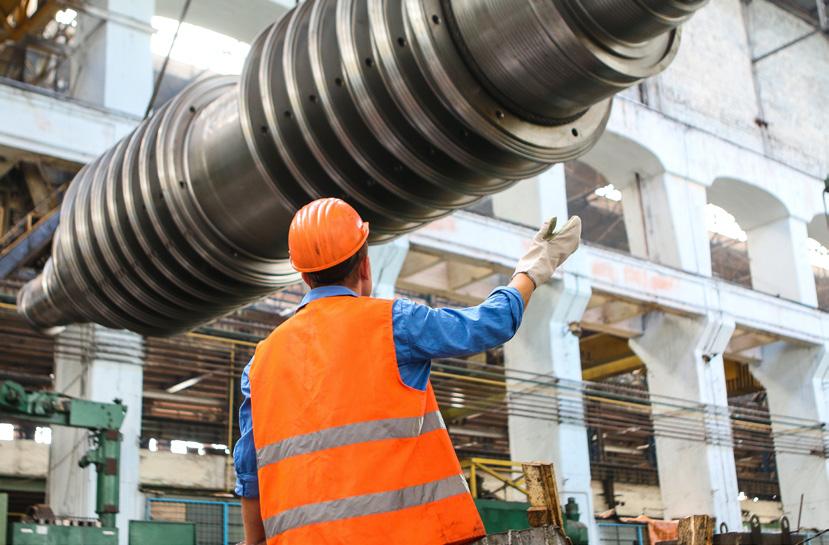
The client enters into multiple contracts on the advice of the EPCM contractor, so cost management is required on several contracts.
There are fundamental differences in terms of fixed price and remeasurable contracts, yet we are seeing EPC contracts
LEGAL
Alexander
being conflated by the insertion of “estimated” budgets in pricing documents, while the conditions of contract are essentially an EPC lump sum contract. The two simply don’t speak to each other.
The EPC contractor sees no harm in signing a remeasurable subcontract, believing that they can manage the budget. However, the EPC contract usually contains numerous restrictions on their ability to claim additional compensation or time. Adding to the risk, the EPC contractor must ensure that agreements with subcontractors follow suit, as any additional costs incurred by subcontractors cannot be claimed from clients.
What to look out for
Another anomaly that we often see is the insertion into the pricing schedule of a “contingency”. While it sounds like a good idea, the conditions of contract do not provide for such a concept. We also regularly come across the phrase “fixed and firm” when talking about pricing. This could mean either that there is no escalation on the prices making up the lump sum, or it’s intended to indicate the price of the project is a fixed lump sum and not subject to remeasurement.
Whose risk is it?
EPC contractors carry the risk of not completing the project on time and for the tendered price, whereas this risk is generally more evenly distributed between the client, the EPCM contractor and the appointed contractors or suppliers in an EPCM contract.
It stands to reason that the EPC contractor is bound by the price and timelines it has offered to the client. It is the contractor who designs and builds the works, so EPC contractors also assume the risk for performance. In addition, EPC contractors must manage the procurement and administration of supplies, professional services and subcontracts.
On the other hand, EPCM contractors do not contract with the construction contractors or suppliers – the client does – and EPCM contractors only take risks in relation to these contracts if problems have arisen due to a lack of skill and care.


Because EPC contractors include the assumed risk in their pricing, EPC contracts are more costly to execute. In addition, the EPC contractor very often stands to benefit from any cost savings occurring on the project. In this way a well negotiated, priced and executed EPC
contract can result in significant benefits to the EPC contractor.
Expertise requirements differ
Under the EPCM model, clients usually appoint both an EPCM contractor (who provides professional services) and a construction contractor. Under the EPC model, the appointed contractor provides design, engineering, procurement and construction services. In addition, the EPC contractor appoints subcontractors to implement and complete the project.
Due to the nature of EPC contracts and client expectations for contractors to provide turnkey services, there is little involvement from the client and the projects are largely managed by the EPC contractor, who contracts directly with the suppliers and other subcontractors. Cost risk and control are weighted towards the EPC contractor and away from the client.
Conclusions
With in-house skills in short supply currently, the use of an EPC contract allows the client to limit its involvement in the contract.
Furthermore, while there are several issues for contracting parties to consider when entering into and executing an EPC contract, alleviation of risks can be achieved with a clear understanding of what they are, a well negotiated contract, and a well-qualified tender submission.
LEGAL
Alex Goddard, candidate attorney
Goddard joined MDA Attorneys in 2022 having completed his BCom Law and LLB. Goddard has been involved in all the services offered by the firm including contract drafting, contracts management, contractual disputes and litigation.
Natalie Reyneke joined MDA Attorneys in 2012. Reyneke has extensive specialist contract skills in relation to the construction, mining, and technology industries. Advising all role players in the contractual hierarchy has provided deep knowledge of practicalities and nuances required to navigate legal issues.
Natalie Reyneke, director
IMIESA September 2023 11 www.mdalaw.co.za
In an EPC contract, the contractor needs to price and schedule for the entire project (design, engineering, procurement, and construction services).
URBAN DECAY PUTS JOBURG’S CBD IN THE SPOTLIGHT
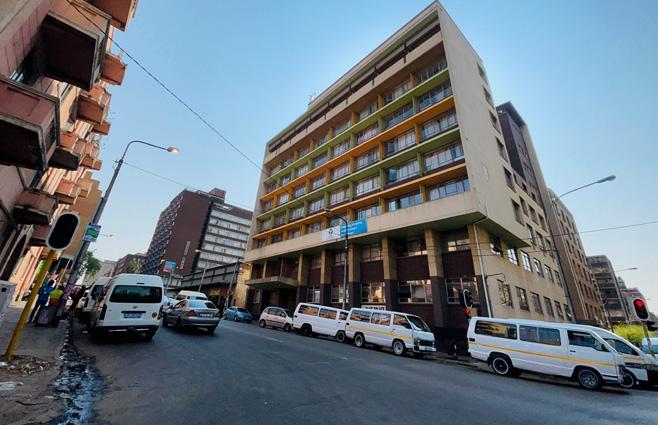
the past two decades, TUHF has provided finance for affordable residential rental properties in all major metropolitan areas of South Africa, totalling over R7 billion and encompassing some 46 374 units
The recent spate of serious events in Johannesburg’s CBD – including the tragic fire in Marshalltown that claimed 77 lives, plus the devastating gas leaks in De Korte and Bree Streets – continue to raise concerns over poor urban management, lack of by-law enforcement and inadequate governance.
From the lack of service delivery, the increased scourge of hijacked buildings, damage to properties caused by the 2021 riots, xenophobic attacks and dangerously insufficient maintenance of infrastructure, we have relentlessly voiced our concerns and engaged with local government to find solutions,” says Paul Jackson, CEO of TUHF, which has been a key driver in Johannesburg’s inner city rejuvenation, with more than R5 billion invested there over the past 20 years.
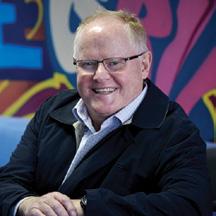
“TUHF has empowered aspiring property entrepreneurs to create safe homes and jobs within the inner city and to make an impact on communities that live, work and play here. We remain committed to the property investors we support, and as such, we must call for urgent change in the way the Johannesburg CBD is being managed,” Jackson continues.
Systemic issues
TUHF is deeply saddened by the recent events in the Johannesburg CBD. Such incidents reflect a critical systemic issue which affects the capital markets, the insurance sector, rental housing suppliers and the tenants they serve.
However, TUHF believes in the business case for inner cities as an essential catalyst for inclusive and transformative economic growth. “Inner cities have the potential to
drive real growth at a local level, providing economic opportunities to SMMEs and low to moderate income households,” adds Lusanda Netshitenzhe, CEO of TUHF21, an allied group entity.
“Therefore, we are committed to collaborating with the city and other stakeholders to find sustainable solutions and believe that a united effort is essential to create a more prosperous city. This reality cannot be ignored any longer,” Netshitenzhe concludes.

12 IMIESA September 2023 SPATIAL DEVELOPMENT & PLANNING
A TUHF building in Johannesburg’s CBD. Over
Paul Jackson, CEO of TUHF
Lusanda Netshitenzhe, CEO of TUHF21
5 REASONS WHY A SAPPMA MEMBERSHIP MAKES SENSE
SAPPMA is an Association of leading companies in the plastics piping business, with the purpose of facilitating high standards of ethics, product quality and technical information. It is an open association, registered as a non-profit Section 21 Company and is well regulated by strong Articles of Association and Code of Conduct.
COLLECTIVE VOICE
TECHNICAL INFORMATION
SAPPMA members have access to objective, expert information on technical matters by way of personal consultations, technical publications, industry conferences and webinars and market survey results/reports.
PRODUCT STANDARDS
Members have free access to the latest product and SANS standards, quality systems and test procedures, test facilities, monitoring and quality control and have representation at SANS Technical committees and other certification authorities.
QUALITY
Members who are pipe producers and installers are set apart from other players in the market by passing the SAPPMA factory audits and adherence to the SAPPMA Code of Conduct.
MARKETING & COMMUNICATION
The SAPPMA mark on a product has become a sought-after quality guarantee that gives customers and end-users the peace of mind that their product meets local and international quality standards. Members are therefore supported by an established brand that is solely aimed at protecting the customer and the infrastructure of the country, as communicated through our marketing and advertising campaigns.
02 04
THE FOLLOWING BUSINESSES AND INDUSTRIES CAN QUALIFY FOR A SAPPMA MEMBERSHIP:
• Pipe & fittings manufacturers
• Raw material suppliers
• Consultants
• Construction companies
• Municipalities
• Water Boards
• Contractors & Installers
• Individuals
01 03 05 JOIN SAPPMA TODAY! www.sappma.co.za
SAPPMA represents more than 80 % of the plastic pipe market in Southern Africa and is the only representative plastic pipe forum in the country. Members have a collective voice at engineering associations, consulting engineering firms, municipalities, water authorities and contractors and are also afforded valuable networking opportunities, social interaction and enjoy a sense of community.
OEM LEADERS IN PUMP OPERATIONS AND MAINTENANCE

Two key issues are central to the turnaround of underperforming water and wastewater infrastructure within municipalities, namely proactive asset management, along with a well planned and executed operations and maintenance (O&M) regime. IMIESA speaks to John Montgomery, general manager for APE Pumps and sister entity Mather+Platt (the Group) about how their turnkey OEM solutions are making a difference.
Asnapshot of the statistics published in the Department of Water & Sanitation’s 2022 Green Drop Report on the state of wastewater treatment plants shows that only a few municipalities were able to obtain Green Drop Certification during their 2021 assessment. The latter is a biennial incentive-based regulatory programme designed to set a benchmark for non-negotiable compliance in the interests of the environment, industry, and society.
The audit process covered 995 wastewater networks and treatment works. Only 23 attained Green Drop Certification, meeting the minimum 90 percent scoring requirement to qualify. The remainder were in a wide band, with 102 systems scoring below 31% and thus red flagged for intervention.
Proactive versus reactive
“The results do send a clear message that the need for proactive O&M has never been more critical,” says Montgomery. “While there are
exemplary treatment plants out there, the balance are in crisis mode due to various contributing factors that include a shortage of inhouse engineering capacity, inadequate skills, as well as reactive maintenance.”
Central to everything are the plant pump systems. “When these go down, the result is a breakdown in the process chain that results in pump stations and treatment works becoming overwhelmed by incoming effluent. Even the best pumps available worldwide – which we design and manufacture as a Proudly South African company – will fail if routine maintenance and scheduled upgrades are neglected,” Montgomery continues.
“This is not a lightly made observation, because we’ve been in the South African pump business since 1952, and a high percentage of the installed population across municipalities and utilities nationally are either APE Pumps and/ or Mather+Platt systems, and the same applies for private industry. Our asset management system shows that many are still functioning some 71 years later.”
“In fact, with effective maintenance they’re designed to work for many lifespans. However, along with expert system matching and utilisation, correct installation is essential to ensure pumps are rock-steady on their footings irrespective of their size. That’s a common cause of pump failures.”
Budget constraints present opportunities for O&M
At times, private sector investors have stepped in to help municipalities restore local water and wastewater treatment plants to bridge local government budget constraints and alleviate a crisis. Here APE Pumps and Mather+Platt have been contracted to repair existing pumps or replace them with Group products in various towns across South Africa.
It’s a short-term solution. However, as Montgomery points out, it could form the basis

14 IMIESA September 2023
John Montgomery, general manager for APE Pumps and sister entity Mather+Platt
Backed by its OEM solutions, APE Pumps is an 8ME (Mechanical and Electrical) contractor in terms of the Construction Industry Development Board grading system, enabling the Group to provide a full turnkey service
for an evolving public private partnership (PPP) model that would be a gamechanger for the future of the public sector water and wastewater landscape, where utilities can outsource to OEM contractors – and cap costs – but remain in full control of their operations. Allied to this, there are the associated benefits of OEM training and skills transfer for municipal personnel.
“In most instances, though, PPPs in this sector are going to be few and far between for municipal utilities where private investors don’t have a bankable guarantee. So, the best approach overall is to ensure that municipal plants have their own world class skills and support in place, together with a sustainable and financially sound service delivery model,” Montgomery continues.
The importance of SLAs
The Group’s response has been to offer service level agreements (SLAs) that enable private and public clients to outsource O&M on APE Pumps and Mather+Platt systems. Irrespective of their age and condition, most if not all Group pumps can be restored – not just to their original standard –but with incorporated technological upgrades.
ABOUT APE PUMPS AND MATHER+PLATT
Part of the WPIL Limited multinational group, APE Pumps designs, fabricates, installs, and commissions single and multistage pump solutions for most industry sectors in South Africa and Africa. These include municipal water and wastewater treatment works, complex and custom pump setups for leading water utilities, the power generation sector, agriculture, petroleum, and general industry. In parallel, Mather+Platt has its own purpose-designed pump systems in these and allied sectors, with a proud legacy that can be traced back to Britain’s First Industrial Revolution in the 19th Century.
Supporting these endeavours is an ongoing investment in new fabrication machinery and cutting-edge investments in 3D scanning technology. The latter provides unprecedented precision for the Group’s engineering and technical teams in determining exact tolerances for new pump designs and retrofits. In the latter respect, the Group has a blueprint of every pump it’s ever produced, so a 1952 product can easily be restored and upgraded to meet most modern requirements.
Design and engineering services
An allied investment in 3D design and simulation software further allows the Group’s engineers to walk through new and proposed refurbishment projects with clients and their professional consultants.
Recent contract examples include an extensive overhaul of Umgeni Water’s Verulam and La Mercy Pump Station – forming part of the Hazelmere Water Treatment Works (WTW) system – to cater for future network expansion. In addition to the refurbishment of the seven existing pumps, two additional APE vertical turbine centrifugal units were added. The scope of works also included electrical, mechanical and instrumentation repairs and upgrades, and the addition of a SCADA system.
“While we have a standard range, our true expertise is in designing, fabricating, and installing fit-for-purpose solutions that optimise fluid transfer in the most energy efficient manner – a pressing need now due to loadshedding and ensuing ‘water and wastewater shedding’, backed by our 8ME contractor registration with the Construction Industry Development Board,” adds Montgomery.
“Our ultimate goal is to revisit each of the hundreds of APE and Mather+Platt pumps installed across South Africa in the past seven decades and to assist private and public sector clients to bring them back to modern-day OEM specification. When the next Green Drop audit comes around, we want our clients to be ready,” Montgomery concludes.

www.apepumps.co.za

IMIESA September 2023 15
INDUSTRY INSIGHT
www.matherandplatt.com
APE Pumps’ and Mather+Platt’s core expertise is in the design, fabrication, and installation of fit-for-purpose solutions that optimise fluid transfer in the most energy efficient manner
A series of APE vertical turbine pumps installed for a pump station refurbishment and upgrade
The fifth highest double curvature arch dam in the world, and the ninth highest dam globally, Yusufeli Dam is a landmark engineering achievement and cost US$711 million to construct.

Turkey’s Yusufeli Dam is one of history’s most iconic structures

Situated on the Coruh River in the Artvin Province of the Black Sea region of Turkey, Yusufeli Dam is a 275 m high double-curvature concrete arch structure and has a developed crest length of 540 m and a section thickness of 8 m at the crest and 90 m at the base on the crown cantilever.
A view of the foundation excavation looking in the direction of stream flow. Various foundation stabilisation and reinforcement measures were required. The dam foundation excavation was completed in 2018, with a total of 3.9 million m3 of rock being removed
DAMS
& RESEVOIRS
16 IMIESA September 2023
The highest in Turkey, the dam was constructed with conventionally vibrated mass concrete and the structure contains 4 million m3 of concrete, impounding 2.1 billion m3 of water at full supply level.
Excavation for Yusufeli Dam commenced in 2014 and the final concrete lift in the dam body was placed in 2021. Impoundment was initiated at the beginning of 2023 and the water depth had reached 256 m by early September.

The dam has a controlled crest spillway, with three gates, which is supplemented by two controlled spillway tunnels on the right flank discharging into the river approximately 1 km downstream of the dam. The dam has a system of four mid-level outlets, which discharge into the spillway plunge pool immediately downstream.
The Yusufeli hydropower project includes an underground power station located beneath the right abutment immediately downstream of the dam, with an installed generation capacity of 558 MW and an average annual energy production of 1.8 billion kWh. It is predicted that the dam will contribute an annual amount of 1.65 billion Turkish Lira to the Turkish gross domestic product.
Owner and project team
The DSi (Turkish State Hydraulic Works) is the owner of the project, which was constructed by Limak Construction S.A. For the detailed and construction design, Limak appointed IC Consulenten of Austria for all geotechnical investigations and design, and a team comprising ARQ of South Africa and Su Yapi of Turkey for the
dam design. Su Yapi was also contracted for the power station design.
The ARQ-Su Yapi team for the dam design was led by Dr Quentin Shaw of ARQ. ARQ was responsible for all dam design, which included numerous complex and detailed studies to model all conditions and modes that could be experienced during construction and operation.
During investigation, design and construction of this super-project, many challenging geotechnical, topographical and logistical conditions were overcome through significant innovations and advances in engineering technology, and the project’s success was in a large part due to an effective cooperative relationship between owner, contractor and designer.
Typography and excavation
The Yusufeli Dam site is located in a remote mountainous area, with relatively extreme weather conditions and challenging site access. The local topography comprises a river with steep canyon slopes of complex rock mass formations showing signs of surface relaxation. The steep riverbank slopes create a topography suitable for an arch dam, while the igneous rock mass forming the V-shape valley demonstrated some challenges that required particular management. Excavation of the rock material was achieved by a combination of controlled blasting and mechanical excavation. As the excavation progressed downwards, the canyon cut slopes were stabilised with grout-injected post-tension prestress rock anchors. In general, 250 tonne, 80 m long anchors were used.
During excavation for the dam foundation, a cable crane and multiple batch plants were erected in preparation for casting of the concrete arch structure. The 3-line cable crane was

DAMS & RESEVOIRS
The completed structure, showing flow release through the dam’s outlet during reservoir impoundment
IMIESA September 2023 17
Construction of the final concrete lifts of the dam spillway
suspended from concrete platforms on the upper banks of the excavation and each crane had a 28 tonne capacity.
The primary concrete batch plant that fed the cable cranes was located on the upper left abutment and this was supported with one supplementary plant located on the downstream coffer dam and another located upstream of the dam, both feeding the placement by conveyor. The batch plants collectively had a concrete
The Yusufeli Dam project won the award for Best International Project at the CESA AON Engineering Excellence Awards held in Midrand, South Africa in August 2023. From left are David Leukes, CESA vice-president; Ryan Cassells, structural dams engineer, ARQ Consulting Engineers; Henry-John Wright, director, ARQ Consulting Engineers; and CESA board member, Jabulile Msiza

production capacity of 740 m3/hour and were operated 24 hours a day to meet the ambitious project production requirements.
The majority of the aggregate materials were sourced from site excavations, although it was necessary to open a supplementary quarry to complete the works. The aggregate crusher was located downstream of the dam site and indicated a capacity of 2 000 tonne/hour. Crushed aggregates were transported almost 2 km by conveyor, with a capacity of 200 m3/hour, to the batching plant at the dam site.
Concrete placement and cooling
The placing of concrete in the dam body commenced in late 2018 and continued without interruption for 30 months until mid-2021, during which time 4 million m3 of concrete were cast. Concrete was placed into forms by a combination of a 9 m3 bucket suspended from the cable crane, and temporary conveyor belts leading directly to the forms. Concrete was spread in the box by rubber-tracked bulldozers and compacted using gang-mounted immersion vibrators attached to an excavator with low-pressure tracks.

Extensive temperature control measures were implemented at Yusufeli Dam, both in terms of pre-cooling and post-cooling of the mass concrete. Pre-cooling was implemented using a cooling plant to chill the mixing water and more importantly the coarse aggregates prior to batching in order

to meet the maximum allowable placement temperature specification of 18 °C. Post-cooling was achieved by circulating chilled water through 32 mm cooling pipe loops (2.5 m c/c) installed in the bottom of each lift cast.
As the concrete construction progressed towards the dam crest, the thickness decreased and the crest length increased, meaning more monoliths were being cast concurrently. As is conventional practice for the construction of a conventionally vibrated concrete dam, a leaderfollower block approach was applied, whereby the monolith casting heights are staggered between neighbouring monoliths.
The final stages of concrete placement occurred in May and June of 2021, when the spillway peers and bridges were formed and cast. These components of the dam comprise reinforced concrete to account for concentrated loading of the structural steel spillway gates to be installed.
Filling the reservoir

Impoundment of the dam reservoir commenced in November 2022 and is currently still progressing. The rate of water reservoir rise during impoundment is controlled by release from the dam outlet works, as well as the release

18 IMIESA September 2023 DAMS & RESEVOIRS
Yusufeli Dam reservoir impoundment level 670 mASL (230 m above foundation)
The primary concrete batch plant and cooling plant located on the upper left abutment
Finite element model of Yusufeli Dam and foundation
from upstream dams in the Coruh River Development Scheme.
The reservoir impoundment speed has been limited to a daily rate of rise not exceeding 1.5 m, pending the availability of sufficient river flow volume. At the current stage of impoundment, the reservoir elevation level has reached a height of 256 m above lowest foundation level.


Finite Element (FE) structural modelling
The unique engineering challenges addressed during the dam design included the development of systems to transfer load from high strength, high deformation modulus concrete into a rock mass with a lower and variable deformation modulus. Verification processes developed to ensure that the design foundation characteristics were achieved were complemented with real-time instrumentation monitoring. With impoundment completed in six stages, the structural behaviour measured on the prototype dam was verified against the respective predictions of the calibrated FE structural modelling at each stage.

FE modelling and analysis was used extensively throughout the design development and verification studies and the modelling capabilities of the latest versions of the MIDAS FEA NX software proved extremely valuable in enabling a very accurate representation of the actual dam and foundation rock mass characteristics. The capacities of MIDAS software were exploited to develop possibly the most complex foundation rock mass model yet for a dam design analysis.
The advanced design analyses undertaken by ARQ included linear elastic, thermal and seismic/dynamic analyses. Non-linearities were built into the FE model to accurately replicate the structural behaviour under both
static and thermal loads, while non-linear seismic time-history analyses and non-linear modelling, including some plasticity in the dam/foundation interface, were applied to replicate as accurately as possible the actual effects and conditions anticipated.
A structural calibration study of the dam FE model was conducted whereby the predicted behaviour of the dam, as output by the FE analysis, was validated against the observed instrumented behaviour of the dam during impoundment. The FE model proved to be marginally conservative, overpredicting displacements of the dam by 5-10 %.

While the average concrete placement rate of the order of 140 000 m3 per month achieved at Yusufeli Dam represents a world record for conventional mass concrete, as much of a challenge as the actual concrete placement was safe concrete post-cooling and joint grouting to provide lateral support to the cantilevers sufficiently rapidly so as not to slow concrete placement. The realisation of this requirement involved real-time instrument monitoring and a reactive management of postcooling processes.


Additional aspects for which ARQ was responsible included foundation rock mass stability analyses on both flanks, assistance and advice on concrete mixes, assistance with the spillway model tests and design, design of the plunge pool reinforced concrete lining, design of foundation stabilisation infills, design of the concrete post-cooling systems and stability design of the inlet for the twin tunnel spillways on the steep upper right abutment. In total ARQ provided more than 4 000 person-days, or 200 person-months of input on the project.
A celebration of excellence
As the central component of the Coruh River hydropower development, Yusufeli Dam is a landmark achievement for Turkey and a significant contributor in the country’s progress towards carbon-neutrality. From an engineering perspective, the project is significant in the increased accuracy of the FE modelling achieved with state-of-the-art software, allowing a substantially better representation of actual conditions, and the consequential development in the understanding of superhigh arch dam behaviour.
In recognition, the Yusufeli Dam project recently won the award for Best International Project at the CESA AON Engineering Excellence Awards held in Midrand, South Africa in August 2023. The dam is also currently the subject of an article published in the USA’s Engineering News-Record (ENR).
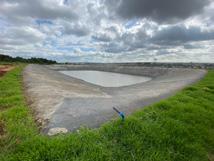 Aerial view of Yusufeli Dam reservoir impoundment
Aerial view of Yusufeli Dam reservoir impoundment
LESOTHO HIGHLANDS PHASE II has a core focus on community and the environment

After a long hiatus and planning preparation, construction on Phase II of the Lesotho Highlands Water Project (LHWP) is now well underway, central to which is the new Polihali Dam and transfer tunnel. IMIESA speaks to Tente Tente, Chief Executive of the Lesotho Highlands Development Authority (LHDA) – the LHWP’s implementing and management authority – about how experiences gained on Phase I have shaped the implementation of Phase II.

What were some of the key lessons learnt from Phase I?
TT Phase I, completed in 2003 and inaugurated in 2004, captured the attention of the world as one of the largest and most complex projects of its kind. It entailed the construction of major structures that include the Katse and Mohale Dams, as well as associated transfer and delivery tunnels that supply water to South Africa.
While Phase I was implemented with the required expertise and in line with internationally established standards, the realities of implementing a project of this magnitude and complexity for the first time brought many learnings. A prime example is that early and meaningful consultation with communities is crucial. Therefore, the groundwork for Phase II has been informed by Phase I and backed by extensive research. Baseline studies have included an assessment of the Instream Flow Requirements (IFR) encompassing water quality, flow and geomorphology aspects; the socio-economic conditions; fauna and flora; archaeology and public health. Environmental and Social Impact Assessments (ESIA) were also conducted, which were subjected to external independent review prior to the issue of environmental authorisations and records of decision by Lesotho’s Department of Environment.
Furthermore, the LHDA has established Area Liaison Committees (ALC) in all project-affected areas. They include representatives from the project, community leadership and community elected representatives. These structures serve to improve community participation in project activities and ensure an ongoing forum for issue identification and resolution.
The LHDA has introduced a robust project complaints management system, which integrates in-person and technological processes.
It closely monitors the management process to ensure that consultants and contractors effectively manage specific complaints relating to their work and people are given feedback. Every step is documented and recorded. Whilst these interventions have been effective to date, there will be a constant focus on improving partnerships with all communities during the life of the project.
How is compensation being managed for affected communities?
Under Phase II, consultations with affected households on compensation options have largely been completed, while registration of all assets that will be impacted has been finalised.
The LHDA has implemented alternative strategies to address compensation delays,
DAMS & RESEVOIRS
Tente Tente, Chief Executive of the Lesotho Highlands Development Authority (LHDA)
which were a pain point under Phase I. One of the strategies – over and above this early consultation and registration of assets –is a phased handover of the construction sites to contractors, where assets that are required by contractors for preliminary works are acquired first, and only handed over to contractors after the affected households have been paid.
It must be noted that in cases where the project needs to access people’s properties before payment has been issued, the LHDA consults the specific owners of the affected properties, and an agreement is reached with them allowing the LHDA access to the land while payment is being expedited.
LHDA is pleased with the significant progress made in compensation payments
for assets affected by the advance infrastructure projects under Phase II. Payments have also commenced for assets which will be affected by the Senqu Bridge, the Polihali Dam and Polihali Transfer Tunnel preliminary works. This is a major lesson learnt from Phase I that is directly being applied under Phase II and is showing benefit.


Does Phase II provide an opportunity to implement more sustainable land use?
Absolutely, and this is a crucial element since livelihood and land use activities in the LHWP catchments have a huge impact. For example, land degradation due to poor management of agricultural activities (crop farming and livestock grazing) affect the catchments and water sources that supply the reservoirs. Overgrazing on rangeland and wetlands and frequent soil disturbance due to poor cultivation methods lead to poor vegetation cover and increase the
DAMS & RESERVOIRS
Forming part of Phase I, the Katse Dam was constructed by the Highlands Water Venture (HWV), a consortium of seven international contractors. Construction began in February 1991 and was completed in May 1997
IMIESA September 2023 21
The diversion of the Senqu River via a pre-cofferdam, and the subsequent diversion of the river into and through a series of diversion tunnels from August 2023 onwards, marks the start of the construction of the main cofferdam upstream of where the Polihali Dam wall will be built
level of soil erosion and sedimentation in the reservoirs.
The LHWP Integrated Catchment Management (ICM) Implementation Plan was developed to address land degradation and livelihoods issues especially in Phase II of the project. The LHDA has intensified land rehabilitation and restoration activities to reduce soil erosion through improvement in vegetation cover and overall land management in the Polihali dam catchment.
The LHDA is concurrently studying the status of the wetlands in the Polihali catchment areas, especially those that are a priority for water delivery. The study will establish the rehabilitation needs of the wetlands and recommend appropriate rehabilitation measures that can be implemented even before impoundment of the Polihali Dam.
Phase I of the LHWP established protected areas at Bokong and Tšehlanyane. However, through biophysical studies of the Katse catchment, and during the development of the wetlands conservation strategy, it was realised that while Bokong and Tšehlanyane were important wetlands areas, they were not necessarily the priority wetlands for the Katse Dam. Hence, the wetlands studies of the LHDA have now focused on identifying wetlands that are a priority for water delivery for each of the reservoirs and on protected area establishment initiatives on such wetlands for Phases I and II.
What steps are being taken in terms of climate change?
The LHDA is currently implementing the contract to undertake the LHWP climate change vulnerability study and to develop the adaptation and mitigation plan.

The LHDA land rehabilitation and restoration activities implemented as part of the ICM implementation plan (e.g., brush control, reseeding, tree planting, establishment of protected areas, establishment of grazing associations, etc.) are meant to minimise the impacts of climate change on the catchments. Some of the main climate change elements are increased flooding (surface flow of water) and drought events.
The LHWP zones have a high concentration of peat wetlands. They are a specific type of wetland that play a particularly pivotal role in mitigating climate change. Peat wetlands hold some of the largest stores of carbon on the planet, and when disturbed or drained, they release the major heat trapping greenhouse gases, such as carbon dioxide (CO2) and methane (CH4).
Although peat wetlands make up only 3% of the planet’s land surface, they are said to absorb twice as much CO2 as all the world’s forests put together. Yet, despite their relevance for the global climate, wetlands are being destroyed faster than any other ecosystem. The LHWP’s
The impounding of the Polihali reservoir will submerge existing roads and tracks, affecting communities in the valleys and tributary catchments of the Senqu, Khubelu, Mokhotlong, Moremoholo and Sehonghong rivers. The three major new bridges being constructed – along with a network of feeder roads and the main access roads to the project area – all contribute towards minimising this disruption and helping to restore community access. Shown here is the Senqu Bridge site where excavations have started for the massive pier and abutment foundations necessary to support the new 825 m long and 90 m high bridge. This is the largest of the three in the LHWP Phase II programme
contribution to peat wetlands rehabilitation and restoration therefore contributes to climate change mitigation and to improving the resilience of the nation.
As testimony to this, the ESIA for Phase II of the LHWP received an award from the Environmental Assessment Practitioners Association of South Africa (EAPaSA) as the Best ESIA in the region. This demonstrates the LHDA’s commitment to environmental sustainability.
What are some of the key technologies and the construction method employed for the Polihali Dam?
Polihali Dam will be a 166 m concrete face rockfill dam (CFRD). The dam embankment will be constructed in compacted layers from free draining rockfill, sourced locally in the Lesotho Highlands, very close to the dam. The main dam embankment will

22 IMIESA September 2023 DAMS & RESEVOIRS
contain 15 million cubic metres of rockfill; and the 43 m saddle dam (also a CFRD) 1,25 million cubic metres of rockfill.
Due to the higher shear strength of rockfill compared to earthfill, side slopes can be steeper than earthfill embankments, resulting in less construction material and a shorter construction period. Using rockfill has a further advantage in that placement can continue during periods of heavy rainfall, frequent in Lesotho. That would not have been the case if the embankments were constructed from earthfill.
Polihali Dam was designed to be constructed in stages to allow overlapping of the major activities on the critical programme path, namely rockfill placement and concrete face slab construction. This method shortens the construction period and has a further advantage in that impoundment can be initiated during the construction period.
Are specialist concrete formulations required for the dam wall?
A number of site-specific factors have to be considered for concrete mix designs. The water at Polihali is “soft” making it moderately aggressive to concrete and this influences the required minimum binder content in mixes. Another important consideration is freeze/ thaw as temperatures at Polihali go down as low as minus 20 degrees Celsius during winter and during summer temperatures can rise to 35 degrees Celsius. Strict concrete specifications were therefore developed.
Concrete face slabs, considering the above factors, and because of low slump and good workability/durability requirements,
require very specialised mix designs. Face slab concrete will be placed directly from mixer trucks into chutes running down the dam face onto a conveyor belt that delivers concrete onto the face before vibration/ compaction and finishing off. It is therefore important for concrete not to segregate down the chutes and due to the freeze/ thaw aspect mentioned above, air has to be entrained into concrete.
Fine and coarse concrete aggregates will be crushed from good quality basalt rock in a dedicated quarry on site. Experience in Lesotho has shown over the years that laumontite and smectite minerals in some basalt types can badly affect concrete quality and basalt containing these minerals is therefore avoided.
What type of tunnel boring machines (TBMs) are being used to establish the Polihali tunnel?
The unit employed is a double-shield gripper TBM designed to install and grout precast concrete segmental linings as it advances. Being a double-shield machine, the unit is able to simultaneously excavate the rock and erect the segments, with the machine fully protected by the shield. The tunnellers are never exposed to unsupported ground, and in effect never see the rock, except for the spoil emerging from the cutter head.
What are some of the key challenges and the expected monthly tunnel advance rate?
Given the existing system of LHWP tunnels, the general ground conditions are well understood, but with almost 1 km of rock cover in places, the particular conditions at a given location are uncertain. Key risks are faulted ground and water ingress, both of which are addressed through the robust design of the TBM and its backup system.
The Polihali Transfer Tunnel is 38 km long and the logistics of the two long TBM drives will be challenging: getting personnel and materials to the face, removing spoil and water, ventilation, power supply, and communications all require a substantial system behind the actual TBM.
Going into Phase II, the LHDA developed the Maloti Minnow Conservation Action Plan that promotes protection of this species and its habitats. This is Lesotho’s only endemic freshwater fish. The LHDA has undertaken minnow assessments across the country, and in the Polihali catchment has identified natural waterfalls on the Senqu and Moremoholo Rivers that were assessed and found adequate to act as natural barriers for the migration of predatory fish into the uppermost minnow habitats

Depending on the rock class encountered, the advance rate will be 30 m/day on a good penetration rate and 7 m/d on the worst penetration rate.
And in closing?
Once completed, Polihali Dam will create a reservoir on the Senqu and Khubelu rivers with a surface area of 5 053 hectares, adding some 2 325 million m3 in storage capacity to the LHWP scheme. This is crucial for water security and future regional water demand management, particularly within South Africa’s Gauteng economic region.
Phase II is equally important for Lesotho in terms of its macro and micro economic objectives, a prime example being a ramp up in hydroelectricity as a sustainable and constant power supply. Another is a renewed focus on sustainable land use and agrobusiness enterprise development within the areas that remain after the Polihali Dam has been impounded.

IMIESA September 2023 23 DAMS & RESERVOIRS
The LHWP Integrated Catchment Management (ICM) Implementation Plan was developed to address land degradation and livelihoods issues in Phase II of the project
With slopes up to 12 m high, which included soft rock outcrops, creating a “soft” interface required the use of an undulating retaining system
MIXED PATTERN WALL DESIGN RETAINS STEEPS SLOPES, WITH EASY PLANTING

PROJECT TEAM
Client: Balwin Properties
Combining engineering with aesthetics, KCE Consulting Engineers created a Terraforce wall design to match the unique site characteristics of De Aanzicht – a new residential development constructed by Balwin Properties in Richwood, Cape Town.
Architect: DHK Cape Town
Engineers (civils & structural): KCE Consulting Engineers
Quantity surveyor: Balwin Properties
Main contractor: Balwin Properties
Sub-Contractor (civils & walling): PK Civils
Sub-Contractor (lateral support): Geociv Group
Terraforce installation: Decorton Retaining Systems
(Terraforce Recommended Contractor)
Terraforce block supplier: Klapmuts Concrete (Terraforce Licensed Manufacturer)
The design successfully interfaces with the environment by creating space for vegetation in the near vertical terraces and “shelves”, with plant pockets constructed by turning the round-faced side of selected Terraforce L12 blocks outwards at regular intervals. The system was installed by Terraforce Recommended Contractor, Decorton Retaining Systems.
Located in the north-eastern quadrant of the property development, the retaining wall acts as the buffer between the engineered platforms on the lower level and the protected nature conservation area to the east.

“The residential scheme nestles up against a large Rhenosterveld reserve. With slopes of up to 12 m high, which include soft rock outcrops, creating a ‘soft’ interface required the use of an undulating retaining system, combining access, planting, and stormwater management,” explains Nigel Barr at KCE Consulting Engineers.
This slope treatment is now gradually disappearing behind planting –hiding the “under the skin” engineering of soft soil anchors and tied back foundations, thanks to the clever use of the mixed pattern Terraforce block facings.
A two-part system
“In order to create the embankment required within the restricted footprint area, KCE designed and detailed a two-part system to adequately secure
PRECAST RETAINING SYSTEMS
24 IMIESA September 2023
Terraforce’s 4×4 Step Block™ system was employed to construct safe staircase access within the development
the embankment, while taking great care to avoid encroachment into the environmental buffers and restricted no-go zones around the conservation area,” Barr continues, elaborating on the design of the overall retaining system.
“A series of soil nailed terraces – the front faces stabilised with gunite shotcrete – were created as the initial lateral support system for the embankment, with a series of terraced Terraforce retaining structures constructed in front of the lateral support.”
As Barr explains, the Terraforce walls act as a cladding for the otherwise harsh and rustic finish of the lateral support system, while also providing planting pockets, accessible terraces and maintenance access routes throughout the embankment area.








When asked why Terraforce was chosen, Barr highlighted that, “Terraforce is the ‘go to’ block for almost all the gravity solutions throughout the region. The aesthetic appeal of the rockface finish blocks suited the overall environment and blends into the surrounding landscape with ease. The blocks are both familiar, proven and readily available, making it the obvious choice for this job. The design and engineered flexibility the Terraforce system provides was also a huge plus – to suit the intricate nature and shapes of the terraced embankment.”
A total of 1 620 m2 of Terraforce walling was installed, with planting of the wall completed early in 2023. The vegetation is now establishing well and already creating the effected envisaged in KCE Consulting Engineers’ initial design concept.
Plant pockets were constructed by turning the round-faced side of selected Terraforce L12 blocks outwards at regular intervals
A total of 1 620 m 2 of Terraforce walling was installed, with planting of the wall completed in early 2023
The Terraforce retaining wall acts as the buffer between the engineered platforms on the lower level and the protected nature conservation area to the east
Creating the future networks and connecting the dots
Hosted under the theme “Creating the future networks”, IMESA’s Northern Provinces Branch hosted a thought-provoking and engaging series of presentations at their annual seminar and AGM, held this year on 25th August at the Birchwood Hotel and Conference Centre in Boksburg, Gauteng.
Attended by members from the private and public sector, the seminar was opened by Northern Provinces Branch chair, Moeketsi Mohlabi, who currently serves as Unit Head: Engineering Centre of Excellence at the City of Johannesburg.

The four presenters at this years’ event where:
• Renier Snyman, technical and product manager at DPI Plastics (DPI), who spoke about the “Advantages of modern plastic pipes”, and the rich history of research and development in PVC and HDPE product innovation. He also expanded on the sustainability advantages in terms of end-of-life recycling and remanufacturing;
• David Lievaart, advisor: Infrastructure Asset Management, City of Johannesburg, who spoke about the “Implementation of infrastructure asset management in local government”, with reference to the Framework for Infrastructure Delivery and Procurement Management (FIDPM) framework;
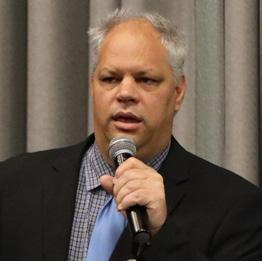
surrounding “Catalytic land development lifecycle” endeavours; and

• JP Alkema, general manager at Smartlock, who presented on the topic, “Combatting vandalism on key point assets”, with specific reference to their specialised industry solutions.
Plastic pipes deliver lasting value
Kicking off the seminar, Snyman said that although plastic pipes are well adopted for infrastructure globally, there is still a relatively low acceptance locally. This is partly due to an absence of adequate coverage at tertiary level, so future civil engineers are not sufficiently well grounded in the subject. As a member of the Southern African Plastic Pipe Manufacturers Association (SAPPMA), DPI is part of the association’s current nationwide initiative to correct this.
As Synman pointed out, it’s a significant sector for South Africa, with local producers manufacturing some 78 000 t of PVC pipes in 2020 (based on current SAPPMA statistics), and 48 000 t for HDPE. That translates into some 36 500 km combined – a high percentage being for pressurised pipe applications.
PVC remains the second largest polymer used worldwide for the production of thermoplastic products, equating to some 18 percent, with a major focus in the infrastructure space on water and sewer pipe applications.
Infrastructure asset management

Next up, Lievaart’s presentation highlighted a wide range of concerns about the existing state of infrastructure, the accuracy of current records, and the interrelated way this information forms the basis for current and future maintenance planning, plus new infrastructure provision within local government. The ultimate objective is service delivery in all areas – from roads, rail and water to electrification and social infrastructure, such as schools and hospitals.
“We already own and operate around 98 percent of our infrastructure, with only some 2 percent allocated to new construction. But how much attention do we pay to that 98 percent in achieving continuous incremental improvements?” said Lievaart.
“In additional to ensuring sustainability, asset management further provides a platform for fact-based decisions and transparent engagement with stakeholders and communities,” Lievaart continued.
All elements of the asset cycle must be factored in as part of the evolving and monitored models developed in line with National Treasury, allied entities, legislation and the FIDPM. “For all elements, sharing lessons learnt and knowledge sharing are key ingredients for success.”
Another recent initiative that forms a platform for engagement is the launch of National Treasury’s Infrastructure Delivery Management System Body of Knowledge (IDMSBOK) service. Essentially, IDMSBOK provides good practice guidelines for effective infrastructure delivery across all governmental entities.
Catalytic land development lifecycle
Lievaart’s presentation had a logical link with Dr Coetzee’s talk on catalytic developments planned and in progress within South Africa’s eight metropolitan municipalities, secondary cities, as well as local municipalities in general. It’s a complex process from a pre-feasibility, bankable feasibility, approval, funding, and development perspective. There are a myriad of policies and procedures along the way.
“Catalytic programmes hinge on private sector investment within an enabling environment created by municipalities, core to which is the spatial
IMESA
Moeketsi Mohlabi, IMESA Northern Provinces Branch chair
26 IMIESA September 2023
Renier Snyman, technical and product manager at DPI Plastics presented on the topic, “Advantages of modern plastic pipes”
planning and preparation stages and phases as the basis for effective implementation,” said Dr Coetzee. “However, history has shown that many catalytic projects have experienced long delays, which is why expert involvement is required.”


Recommendations to alleviate bottlenecks include breaking down silos. “One of the best ways to effectively track and monitor within a complex multi-disciplinary team and project environment is to ensure that there are programme management leaders in place that understand the complete process and can integrate and execute land development initiatives effectively.”

“For our catalytic developments to work, we need to base our approach on international standard practices in terms of dealing with distinctions between portfolios, programmes and projects – areas where the FIDPM is one of the mechanisms that certainly adds value from a clarification perspective,” Dr Coetzee continued.
Combatting infrastructure asset vandalism

Rounding off the presentations, JP Alkema’s talk on the practical side of asset management was well appreciated by the audience in terms of the solutions his company, Smartlock, offers
unique key numbers. For utilities, the solution includes applications for access control and monitoring of manholes, equipment containers, pump stations, power substations, high voltage transformers, access tunnels, water and sanitation infrastructure or any facility requiring operational control.
An allied solution is Smartlock’s RHI-NODE access chamber series, which can also be installed with the GLAM system. One of the RHI-NODE’s major advantages is that its key components, such as the lid, coping and base are manufactured from SMC (sheet moulded compound), which is part of the GRP (glass reinforced polyester) family of materials.
“Essentially, it’s a lightweight, high-strength replacement for metal components like manholes that are frequently stolen in South Africa for their scrap value,” Alkema explained. Additional benefits include excellent corrosion and UV protection, as well as high impact resistance.
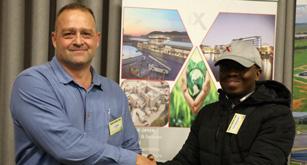
Conclusions
“The feedback from delegates has been overwhelmingly positive,” said Mohlabi, “with an excellent turnout by our Northern Provinces Branch members.”


“We have the solutions, the expertise, and the commitment to address our challenges and opportunities as engineers. We just need to optimise this process to ensure that national, provincial and local government strategies are aligned when it comes to the pressing need for excellence in infrastructure service delivery –so vital for our sustainable economic future,”
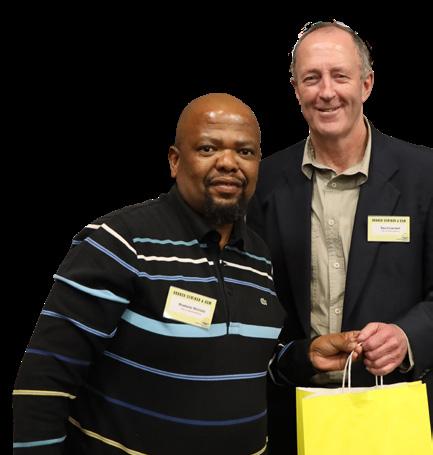
IMESA
Khomotso Mdhluli, secretary general of the IMESA Northern Provinces Branch, and programme manager: Project Management Unit at Capricorn District Municipality
Moeketsi Mohlabi together with presenter, David Lievaart, advisor: Infrastructure Asset Management, City of Johannesburg. Lievaart’s topic was entitled, “Implementation of infrastructure asset management in local government”
Vukosi Manhengeni, a candidate civil technologist from iX engineers, together with lucky draw winner, Zamantungwa Zwane from the City of Ekurhuleni. iX Engineers was one of the event sponsors
Dr Johan Coetzee’s presentation was entitled “Catalytic land development lifecycle”
JP Alkema, general manager at Smartlock together with Vukosi Manhengeni from iX engineers. Alkema’s presentation was entitled “Combatting vandalism on key point assets”
Lucky draw prize winner, Mmakoena Moloto from Johannesburg Roads Agency together with Vukosi Manhengeni from iX engineers
IMIESA September 2023 27
Lucky draw prize winner, Mpoti Machaba, chief operations officer, Rand West City Local Municipality, together with Vukosi Manhengeni from iX engineers
IMESA
The IMESA KZN 2023 Golf Day was held on the 25th August at Royal Durban Golf Club and was fully booked three weeks prior to the event.

GOLF
DAY
We had 120 golfers smartly attired with branded apparel and abundant refreshment opportunities at the 13 sponsored watering holes. The prize giving dinner hosted 160 delegates with numerous giveaways and awards. There were two raffle sponsors (Naidu Consulting and Sneaker Foundation),
Thank you TO OUR SPONSORS




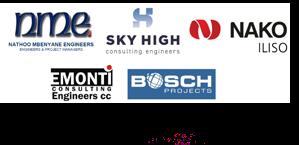
13 waterhole sponsors, including Rhotech as the Bronze Sponsor, DEVRU as the Silver Sponsor, and the biggest sponsor for the day, with the most number of fourballs, was Gold Sponsor APE Pumps. The event was an overwhelming success with several sponsors already booking their spots at next year’s Golf Day. Congratulations to the IMESA KZN
Golf Committee for organising the eventful day.
WOMEN’S DAY
The IMESA KZN Branch would like to thank all who participated in the Women’s Day event that was held on the 4th August 2023 at the Riverside Conference Centre in Durban.
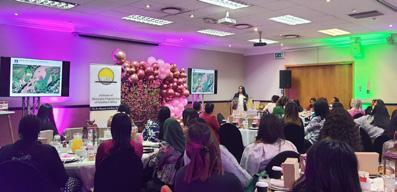
We had amazing speakers that challenged our thought processes and shared some interesting facts about developments within the city. Our appreciation goes out to all the speakers and all who attended. Thank you to our sponsors.
The IMESA Border Branch would like to thank all who participated in the Women’s Day event that was held on the 4th August 2023 at the Blue Lagoon Hotel in Beacon Bay, East London. We had incredible speakers that kept everyone’s attention well in check. Our appreciation goes out to all the speakers, sponsors and attendees.

IMESA KWAZULU-NATAL BRANCH Durban & Surrounding Areas imesakzn@imesa.org.za
2023
28 IMIESA September 2023
East London & Surrounding Areas
Conducted by service provider, Tachfin, the SETA accredited programme used a blended training approach that included classes, e-learning and the submission of a portfolio of evidence. Training modules covered issues related to leadership, policy making, emotional intelligence, monitoring and evaluation.
The training was offered by the Vuthela iLembe LED Support Programme (Vuthela), which is funded by the Swiss State Secretariat for Economic Affairs and implemented in partnership with the KwaZulu-Natal Department of Economic Affairs, Tourism and Environmental Affairs, the iLembe District Municipality and the local municipalities of KwaDukuza and Mandeni. Central to Vuthela’s mandate is the creation of an enabling business environment for inclusive economic growth and job creation.
Delegate feedback
The response from delegates was unanimously positive, with the following snapshot of comments fielded on specific course components.
“Previously, performance management and evaluation (PME) were a tick-box exercise for most councillors, but after doing this course, our understanding of PME improved and we now know what a valuable tool it can be to measure the performance of projects and managers,” comments Councillor Nelsingh Sewraj from KwaDukuza.
“The module on policy formulation was also very helpful. In KwaDukuza, we have policies for everything, and new policies are still being developed. The problem we face is implementation of these policies, and this module helped us to understand this challenge better.”
Adding to these comments, Councillor Thembinkosi Mhlongo from Mandeni Local Municipality says, “We needed clarity on our oversight role, and the training specified the frameworks that guide this. It was not only about theory. It was about being conscious of the significance of our work for the public.”
Councillor Sabelo Mfayela from Ndwedwe Local Municipality agreed that the training helped councillors and managers to execute their leadership duties without infringing laws. “It was important for us to understanding how municipal finance works, and how we fit in by playing an oversight role.”
Winning through teamwork is key and Nokuthula Bhengu, a manager from KwaDukuza
Finance and oversight course empowers iLembe leaders
A group of 35 delegates comprising councillors and senior managers from the five local municipalities that form part of the iLembe District have successfully graduated from an in-depth municipal leadership, finance, and oversight capacity programme.


Local Municipality, says she appreciated the module relating to emotional intelligence.
“The emotional intelligence training should be offered to all other staff, including juniors, because it changes how one behaves. We cannot just sit back and fold our arms. We have to apply ourselves and think about how we can benefit our communities,” says Bhengu.
The provision of services
A prime example of civil service in action is iLembe’s introduction of a new digital management system to improve the provision of free basic services and optimise revenue management.
During this landmark Vuthela initiative, the physical records of over 26 000 indigent households were verified against external data
sources and converted to digital registers that can be updated regularly, creating an accurate and reliable online platform aligned to each municipality’s indigent management policy.
The new platform is based on a secure encrypted database which is accessible on the internet and caters for all the steps in the application and approval process, leading to subsidy grants being approved or declined. Supporting documents of applicants can be taken on a mobile device and automatically linked to the application.
For iLembe’s councillors and managers, it’s an invaluable tool in ensuring equitable social services, and forms a core part of planning, financing and executing infrastructure investments – putting invaluable lessons learnt into practice.
IMIESA September 2023 29 TRAINING & DEVELOPMENT
Councillors graduating from the municipal leadership, finance and oversight capacity programme
Management delegates from iLembe District’s five municipalities with their programme certificates
Cost effective dust suppression for unpaved routes

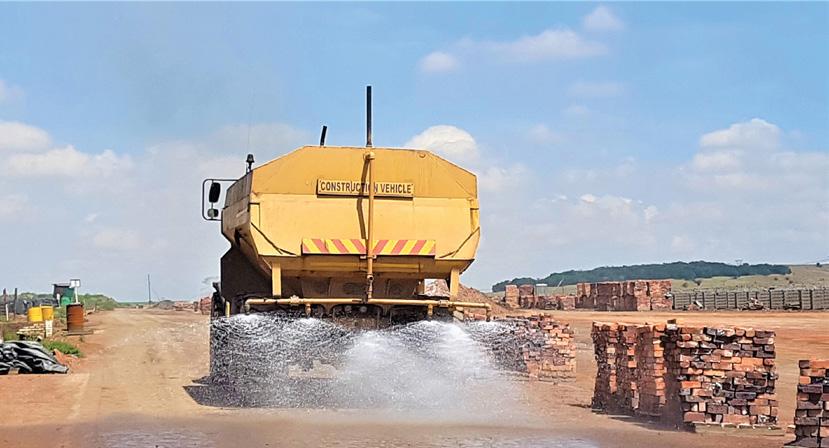
Compared to alternatives such as paving or tarred roads, implementing the CHRYSO Eco Dust solution leads to significant cost savings. This is particularly important for operations facing challenging economic times as there is immense value in reducing maintenance expenses while achieving optimal dust control,” explains Michelle Fick, BU development manager: Concrete Aesthetics and Key Accounts at CHRYSO Southern Africa. She explains that CHRYSO Eco Dust provides long lasting effects, ensuring that roads and surfaces remain dust-free for extended periods. By reducing the frequency of reapplication, CHRYSO Eco Dust streamlines operations and minimises disruption to daily activities.
Eco-friendly
Another major advantage offered by CHRYSO Eco Dust is its eco-friendly nature. The product is designed to be environmentally sustainable, with low volatile organic compound emissions and UV resistance. For this reason, industries, especially those subject to stringent health, safety, and environmental regulations – like quarrying and mining – have welcomed CHRYSO Eco Dust as a viable solution to ensure compliance, while minimising their ecological footprint.
“These industries, which are often located in environmentally sensitive areas, face increasing pressure to minimise dust emissions and their impact on surrounding communities. CHRYSO Eco Dust not only helps meet regulatory requirements, but also significantly reduces
fuel and water consumption and carbon dioxide emissions associated with traditional dust control methods, such as water tanker spraying. The result is a greener and more sustainable approach to dust suppression,” says Fick.

Improved safety
Moreover, CHRYSO Eco Dust improves overall safety in dusty environments. By minimising dust particles in the air, visibility is enhanced, thereby reducing the risk of accidents. The improved road gripping also enhances traction for vehicles, further contributing to safety and preventing potential mishaps.
Universal applications
Beyond the cement and quarrying industries, the versatile applications of CHRYSO Eco Dust have also made it a preferred choice in cement plants, precast yards, building sites, farms, game reserves, rural airfields and other areas where dirt roads and dusty surfaces require sealing and maintenance. Even less developed residential areas and sandy football pitches can also benefit from the long-lasting effects of CHRYSO Eco Dust to ensure a safe and sustainable operating surface.
An innovative range of dust suppressants available from CHRYSO Southern Africa offers a comprehensive approach to sealing and maintaining dirt roads, gravel pathways and other dusty surfaces.
An innovative range of dust suppressants available from CHRYSO Southern Africa provides substantial benefits and enhanced operational efficiency
ROADS & BRIDGES
Sealing a road with CHRYSO Eco Dust
30 IMIESA September 2023
CHRYSO Eco Dust improves overall safety in dusty environments
Excellent progress reported on regional SANRAL projects
Members of the National Council of Provinces (NCOP) recently undertook oversight visits to various South African National Roads Agency SOC Limited (SANRAL) projects throughout the country, approving progress to date.

Projects visited within the Eastern Cape include the N2 Wild Coast Road development – which incorporates the R1,72 billion Msikaba Bridge, currently under construction. This 580 m span, 195 m high cable stay bridge is expected to be completed at the end of February 2025.
An iconic structure in the making, Msikaba Bridge was recently featured on a National Geographic engineering series entitled Building Impossible with Daniel Ashville. To date, over R80 million in wages has been paid to targeted labour and more than 2 750 fulltime equivalent jobs created.

In parallel, other projects overviewed by the NCOP in this region include the R61 section between Bambisana and Lusikisiki, the R336 from Kirkwood to Addo, and the N2 between the Gamtoos River and the Van Stadens River.
“This oversight visit is geared at making development more transparent and more visible. The NCOP is empowered by law to intervene where there are service delivery blockages,” commented Honourable Zolani Mkiva in leading the NCOP delegation to the SANRAL projects in the Nelson Mandela Bay Metropolitan Municipality and the Sarah Baartman District Municipality.
Eastern and Northern Region
At the NCOP oversight visit to SANRAL’s Eastern Region (Free State), the MEC for Community Safety, Roads and Transport, Maqueen Letsoha-Mathae, indicated that she is in discussion with SANRAL to take over the repairs and maintenance of the R26, R74 and
R34. The MEC also noted that her department now makes use of SANRAL engineers to assess the quality of road upgrades and repairs before they make any payments to their contractors.
Meanwhile, in SANRAL’s Northern Region, NCOP members visited the upgrade project along the R573 national road (Moloto Road) Section 2 between Kwaggafontein and Vlaglaagte within the Thembisile Hani Local Municipality. Moloto Road is a special project, which forms part of several Strategic Infrastructure Projects (SIPs) identified and undertaken by the South African government to revive the country’s economy. In addition, upgrading Moloto Road will promote safety and improve mobility for all road users.
Mpumalanga and KwaZulu-Natal
Other projects that featured during the NCOP visits include the upgrading of the N2 between Ermelo in Mpumalanga and KwaZulu-Natal, the upgrading of the R40 national road between Hazyview and Bushbuckridge, plus a maintenance project along the N17 national road Section 5 in
Chrissiesmeer within the Msukaligwa and Chief Albert Luthuli local municipalities.
Progress Hlahla, SANRAL’s northern regional manager, welcomed the NCOP visit on “Building Viable Provincial and Municipal Infrastructure for Effective Delivery of Services to Communities”.
“This initiative goes a long way in sharing SANRAL’s knowledge and expertise of infrastructure development in the country, but it also symbolises the ongoing strategic partnership between the national roads agency and the government at national, provincial and local level, and ensures that the infrastructure projects are delivered on time and within budget,” said Hlahla.
Challenges identified
Some common challenges identified across the projects include high contestation by local emerging contractors, demands for ringfencing of economic opportunities for locals, and the sometimes exploitative relationship between the main contractors and subcontractors.
“SANRAL appreciates the role its road infrastructure development service delivery plays in the socio-economic upliftment of communities where we work. The oversight visits by NCOP delegations to our projects across the country was an opportune time to demonstrate the impact of our work through the creation of jobs, skills development, and participation of previously marginalised groups in economic opportunities presented by our projects,” SANRAL CEO, Reginald Demana, concluded.
IMIESA September 2023 31 ROADS & BRIDGES
NCOP member, Honourable Zolani Mkiva, discusses SANRAL’s projects during an oversight visit to the R336 Kirkwood-Addo Road upgrade
Construction on track at the R336 Kirkwood - Addo project
WHERE ARE YOU ON THE ROAD TO WATER DIGITISATION?
Municipalities are looking for opportunities to improve service delivery and cash flow. Yet many still don’t realise the hidden gains of digitising their water systems, and on average, local towns and cities lose nearly half their water income – a phenomenon known as non-revenue water (NRW).
 By Chetan Mistry
By Chetan Mistry
According to the Department of Water and Sanitation, most local regions lose between 30 and 50 percent of water revenues. This means that NRW costs our economy approximately R7,2 billion annually, and this drain is primarily from municipal pockets. For example, eThekwini Municipality’s 50% NRW losses amount to some R700 million annually.
That’s money left on the table. The value of chasing that money is substantially better and easier than increasing taxation and rates. Investing in water infrastructure builds a municipality’s financial and service future. And it is within reach through water digitisation.
Water digitisation can occur without removing current systems and infrastructure. It represents a range of benefits, namely cost savings, automation, greater efficiencies, and data-driven strategic planning. Whether to improve wastewater, manage pipe infrastructure, enhance billing capture and delivery, or reduce pollution, municipalities can achieve great things quickly with digitisation.
But where do they start? The first step is to know where they currently are. A landmark paper by the International Water Association (IWA) and Xylem explores this question and identifies a maturity spectrum for water digitisation.
The digital maturity of water operations runs through five categories:
• Not started: These are sites with only legacy analogue infrastructure. There are no digital strategies or technologies in play.
• Basic: Basic sites have begun incorporating digital technologies into their operations. They are developing online monitoring capabilities by combining Supervisory Control and Data Acquisition (SCADA) and Internet of Things (IoT) systems.
• Opportunistic: Sites qualify as opportunistic; they start redesigning their operations with digital automation and control enhancements. A clear sign is the presence of analytics tools utilised for process optimisation.
• Systematic: In systematic sites, digital technologies are well established. There is evident inter-process automation and control, and the site’s internal resources and platforms work with digital infrastructure.
• Transformational: In the most mature stage, transformational sites incorporate digital technologies across business and operations processes, using advanced analytics for decision-making.
Many water management systems in South Africa still fall in the first two
categories, with some moving up the stack. But this is not a race. It’s not imperative that water sites all graduate to “transformational” status. Every digital addition to a site will deliver benefits in costs and performance. A “basic” site will produce considerably more benefits than one still at the starting line. Every step forward leads to outsized results.
How can municipalities move the dial forward? The IWA and Xylem report offers some advice:
• Not started: Acknowledge digitisation as a business priority and develop a digital strategy. Pursue pilot projects to explore digital implementation.
• Basic: Mobilise pilot projects and learn from industry peers and research. Inform customers and employees of the new direction, and look at how to transition recording, billing, and similar processes from paper to digital.
• Opportunistic: Enhance and stabilise data infrastructure and align operations around data driven goals. These steps will lay the foundation for incorporating next level technologies.
• Systematic: Use new digital technologies to develop new products and services. Develop an evolving digital framework and align projects with the new digitally powered business strategy.
WATER & WASTEWATER
32 IMIESA September 2023
• Transformational: The work is not done!
Continue using digital technologies to implement increased efficiencies. Exchange best practices with other utilities and study the breakthroughs in the modern water industry.
Municipalities can increase revenue and service delivery, often through a few straightforward deployments of digital services. They can analyse their current stockpiles of data, add digital dashboards and alerts for site personnel, inspect pipes and other infrastructure cheaply and without service disruption, activate smart billing, reduce pump energy and maintenance, and much more.
The way forward
Xylem has been helping towns and cities across the globe to revitalise and digitise their water sites. From the Cape to Cairo, we work with African municipalities to solve their water challenges and gain long-term value and revenue. As your trusted water solutions partner, we can provide the insight, skills and services to complement your strategies and workforce.
Where do your water sites stand on the road to water digitisation, and how can Xylem help you reach your destination?

Start your journey today and discover how digitisation boosts your community’s solvency, prosperity and service delivery excellence.
AMPHIBIOUS PUMPS FOR DIVERSE APPLICATIONS

Amphibious heavy-duty pumps like the Toyo VH range, available from IPR – the official southern African distributor – are designed to operate effectively in challenging environments where versatility and durability are paramount.
Capable of operating at maximum depths of 30 m, their ability to handle heavy and abrasive slurries is instrumental in the construction sector, particularly in dewatering building sites and during tunnel construction, where they can operate either partially or completely submerged. Notably, a compact version with an inline outlet discharge is beneficial in tunnelling works where space is a limitation.
Units in the Toyo VH range can function as priming or booster pumps and are installed on a frame with a strainer or with a fixing cone, with or without an agitator. Additionally, larger models come equipped with an adjustable wear plate to optimise hydraulic efficiency.
These pumps can manage slurries with densities of at least 1,25 kg/dm³ and solid contents up to 55% by weight. They handle solid particles up to 80 mm in diameter and liquid temperatures up to 60 ° C with pH levels between 4 and 14.
Special versions of Toyo VH pumps can also handle solid content of up to 60% by weight and liquid temperatures up to 80 ° C. Variations in materials of construction, including stainless steel and specialised alloys, are available for applications with these extremely high temperatures.
Ruaan Venter, business development manager at IPR, explains that one of the most important advantages is that the Toyo VH range features a unique agitator design that lifts sediment into suspension, enabling the continuous pumping of media with high solid concentrations.
The Toyo VH range of amphibious pumps can manage slurries with densities of at least 1,25 kg/dm³

IMIESA September 2023 33
Chetan Mistry, strategy and marketing manager at Xylem Africa
WATER & WASTEWATER
Recycle and reuse water to save the planet
90% of natural disasters are water-related
Arecent report entitled “Thirst for change: securing a water positive future” supports this view based on an in-depth study conducted by BSI in partnership with Waterwise – a leading voice on the efficient use of water. The report includes an indicator evaluating water scarcity in 40 locations worldwide.

While water is abundant on Earth, just 0.5% is available as fresh water, and the report finds that a combination of population growth, climate change and economic development is driving demand and putting growing, unsustainable pressure on this supply.
Yet in a positive sign, the findings come amidst growing recognition of the importance of water management. According to polls commissioned by BSI, two-thirds of consumers and 80% of small business leaders identified clean water and sanitation as “part of sustainability”, while half of the former and 44% of the latter placed it in the top five issues to focus global resources and effort on.
“At BSI, we understand that ensuring a water secure future could be as big an opportunity as reducing carbon emissions. As an organisation focused on driving business improvement, we hope we can have a significant positive impact on society and organisations alike by advancing this debate,” says Jonathan ChocqueelMangan, chief strategy and transformation officer at BSI.
Action points listed in the report include the need to:
1
45 major drought events took place in Europe in the past century affecting millions with 15% of the EU’s population affected by drought annually
Recognise water wastage as a serious challenge: Acknowledge the issue and act, with utility companies leading the way to reduce network leakage.
Ensure it is easy to choose watersaving products and make sustainable choices: There are lessons to be learnt from countries like Australia and Singapore, which apply mandatory product water efficiency labelling systems, aligned with the relevant standard.
2
18% drop in total agricultural productivity between 2002 and 2010 following Australia’s so-called ‘Millennium Drought’, often described as the worst on record
65 000
3
Embrace innovation and make better use of data: Smart meters have the potential to be a gamechanger when it comes to saving water.
4
Encourage a water saving culture: Prioritise protecting our planet through water management, whether that is at home or in the workplace, and across different sectors.
5 Close the loop: Make water recycling the norm where possible, using techniques such as water reuse, or rainwater harvesting.
Estimated number of lives claimed from drought between 1970 and 2019, with the majority in Africa
22.48%
Proportion of the US and Puerto Rico in drought as of July 2023
6
Partner for impact: Collaborative effort across a wide range of players, from government and regulators to the water industry and ultimately all of us as water users, can help address the growing challenges around water availability. “Water is fundamental to life. Yet we face huge challenges across the globe in ensuring water is available for people, organisations, and the environment. The United Nations report that a quarter of the world’s population already live in countries under water stress. It’s increasingly clear that we can’t go on as we have been. It is just not sustainable,” Nicci Russell, chief executive at Waterwise concludes.
To download the full report, visit www.bsigroup.com
29% increase in frequency of droughtrelated disasters since 2000 compared with the preceding two decades
US$249 billion
Cost of crop failures in the US and other droughtrelated economic losses since 1980
US$27.8 billion
Economic losses linked to those droughts
1.43 billion people affected by drought globally between 2000 and 2019
Without action, by 2050, 75% of the world’s population could be facing drought, with South Africa alone expected to experience a water deficit of 17% by 2030. This presents a persuasive argument for an increased focus on water circularity through global collaboration and innovation.
WATER & WASTEWATER 34 IMIESA September 2023
NATIONWIDE CAMPAIGN DRIVES HOME THE VALUE OF PLASTIC PIPE

The Southern African Plastic Pipe Manufacturers Association (SAPPMA) has begun conducting a series of educational lectures at selected universities and professional associations as part of its ongoing initiative to promote knowledge and awareness within the academic community, and industry.
SAPPMA’s educational campaign is aimed primarily at 3rd and 4th year engineering students, alongside its awareness programmes for municipalities, utilities and the built environment in general
University of Johannesburg, during which distinguished speakers and industry representatives who are members of SAPPMA will be sharing their knowledge.
“Plastic, though facing global criticism, continues to dominate certain markets –particularly in the realm of pipes. However, throughout the years we’ve found that higher education institutions lack expertise and comprehension of plastic pipes,” explains Jan Venter, the CEO of SAPPMA.
“Currently, the curriculum only includes a brief discussion of thermoplastic pipes as part of hydraulic design. Therefore, this educational campaign was created in response to a growing need to give students insightful information about the world of plastic pipes and the most recent developments in the sector,” Venter continues.
To date, SAPPMA has funded each of these engagements entirely on its own, motivated by the view that doing so is a crucial, long-term investment that will improve graduates' entry-level skills sets and job prospects.

The campaign, aimed primarily at 3rd and 4th year engineering students, has already witnessed engaging sessions held at Pretoria University and the University of the Witwatersrand, as well as at Institute of Municipal Engineering presentations in the Eastern and Southern Cape. Future engagements have already been set up with Stellenbosch University and the Jan Venter, CEO of SAPPMA
“The feedback we’ve received from participating students and their lecturers, who have graciously created space for us within their exciting programmes, has been overwhelmingly positive. During
each of our sessions, the students posed insightful questions that fuelled productive discussions and generated a dynamic learning environment. These talks also highlighted their enthusiasm for the subject matter,” says Venter.
A platform for knowledge sharing SAPPMA remains committed to nurturing ongoing engagements and to building a platform for knowledge exchange.
“Our mission is to bridge the knowledge gap by offering practical, up-to-date information for all interested parties. We see it as an important part of our mandate to provide clarity to the market and ensure tomorrow’s industry leaders receive well-rounded perspectives. To this end, SAPPMA’s aim is to persist with these efforts, provided they remain financially viable,” adds Venter.
“We would also like to extend the invitation to other educational institutions, municipalities and water boards to engage with us in order to gain first-hand information on the evolving landscape of plastic pipes and their applications,” Venter concludes.

IMIESA September 2023 35 WATER & WASTEWATER
The Southern African Vinyls Association (SAVA) celebrated a historic milestone as it hosted its inaugural “Innovation in PVC” conference in August 2023 at Sasol’s Head Office in Sandton, Gauteng.
“Innovation in PVC” conference showcases local and global excellence
Monique Holtzhausen, CEO of SAVA (second from left) together with presenters at SAVA’s inaugural “Innovation in PVC” conference. From left are Ali Kalantari (Omya Idwala), Kyle Lovell (Arengo Plastics), Annabe Pretorius (Plastics SA), Jerrie Vermeulen (Sasol), Daniel Martinz (INEOS Inovyn), Wessel Oelofse (Mpact), and David Mokomela (Sasol)

The conference provided an exceptional platform for PVC professionals to converge and engage in thought provoking discussions, explore innovations, and address sustainability concerns within the sector. Notable highlights included the participation of industry luminaries who shared their insights and expertise.
David Mokomela, VP Base Chemicals at Sasol delivered the opening presentation, entitled “Innovation within a South African chemicals construct.” In his address, he provided a comprehensive overview of the current state of the PVC industry in South Africa. His insights shed light on the industry’s growth, challenges, and opportunities.
In turn, Daniel Martinz, business development manager: Specialty Vinyls at INEOS Inovyn, spotlighted the latest and most innovative PVC applications recognised at the recent Inovyn Awards held in Brussels in October 2022.
“Initiatives such as renewable energies, decarbonisation of processes, renewable feedstocks, and circularity are transforming
ABOUT PVC
PVC (or vinyl) is primarily used in building and construction products such as pipes, gutters, windows, doors and flooring. All of these products have a long lifespan of fifty years or more.
the vinyls chain,” he stated. He also shared the encouraging news that demand and innovation in the PVC sector have never been higher, with a remarkable 48% of all PVC patents issued in the last decade.
The event also served as an opportunity for Inna Jeschke, business unit manager: Polymers at INEOS Inovyn to introduce audience members to Biovyn – the world’s first commercially produced bio-sourced PVC using 100% renewable feedstock. With the launch of Biovyn in 2019, INEOS Inovyn became the world’s first commercial producer of bio-attributed PVC using a renewable supply chain fully certified by the Roundtable on Sustainable Biomaterials.
Diverse topics explored
Throughout the day, the balance of the presenters covered a broad spectrum of topics, reflecting the dynamic nature of the PVC industry. Discussions ranged from global trends in stabiliser systems for PVC to breakthroughs in sustainable extrusion of rigid PVC. The exchange of ideas and knowledge further solidified the industry’s commitment to staying at the forefront of technological advancements.
Focus on PVC recycling
In the second half of the conference, attention turned to the crucial topic of PVC recycling in South Africa. Local recyclers shared their success stories and innovative applications aimed at
developing end markets for recycled PVC. These discussions underscore the growing importance of sustainability and circular economy principles in the PVC sector, aligning with global efforts to reduce environmental impact.
Celebrating innovation and sustainability
The conference culminated on a high note as SAVA recognised and rewarded excellence in the industry. A cash prize of R25 000 was awarded to Michelle Mokone, a director at Mo’s Crib, a South African based eccentric home decor design company specialising in sustainable handmade decor items crafted from recycled PVC pipe. This acknowledgment highlighted the innovative and eco-conscious spirit that drives the PVC sector forward.
A promising future for PVC
“The event has undoubtedly marked a watershed moment in the Southern African PVC industry and serves as a testament to the industry’s commitment to driving positive change, fostering innovation, and embracing a sustainable future. We look forward to future events that will continue to drive progress and excellence in the Southern African PVC industry,” concludes Monique Holtzhausen, CEO of SAVA.
To download the conference presentations and for more information about SAVA visit www.savinyls.co.za
36 IMIESA September 2023
SAVA
Establishing the Phezukomoya Wind Energy Facility
The consortium was awarded contracts to construct the Koruson Main Transmission Station, as well as two of the three wind farms within the Koruson One development.
EDF Renewables (South Africa) and its partners H1 Capital and Gibb Crede, are developing Koruson One, which was awarded in terms of Bid Window 5 of the Renewable Energy Independent Power Producer Procurement Programme.
The primary challenge encountered by Concor, which is responsible for the civil balance of plant on this project, was establishing access routes to the mountaintops where the wind turbine foundations and hardstands are being constructed. As Marritus Bezuidenhout, project manager at Concor explains, this required extensive blasting and clearing work.
Hollow foundations
One notable aspect of the Phezukomoya Wind Energy project is the use of hollow
foundations, a first for a wind farm in South Africa. Hollow foundations offer several advantages, including a reduced carbon footprint due to the use of less readymix concrete. The hollow design also allows for the inclusion of ducts and facilitates post-tensioning of cables for the tower, and installation of the power cables to the electrical reticulation network.

“However, constructing hollow foundations is more labour intensive, requiring additional formwork as well as more steel reinforcing,” Bezuidenhout explains. “It also requires precision work by the steel fixing teams to ensure the stringent tolerances are met.”
Winter temperatures have posed another challenge for the construction team, often falling below 5°C. This has meant that the casting of the readymix concrete needs to be carefully managed. To mitigate this issue, heat pumps are used at the batch plant while strict scheduling and control of concrete casting is implemented. Thermal blankets are also used during the curing process.
Community engagement
In addition to addressing construction challenges, Concor prioritised community engagement and skills development. A significant portion of the project's staff comprise local community members who receive training and on-site experiential work. The company collaborates with local SMMEs –subcontracting services such as steel fixing, temporary ablution facilities, security, and transportation to the local taxi association.
To date, Concor has successfully delivered the civil balance of plant on more than 10 wind farms in the Western, Eastern, and Northern Cape regions, and Bezuidenhout says this experience has played a significant role in optimising the construction activities on the Phezukomoya project.


IMIESA September 2023 37 RENEWABLE ENERGY & ELECTRIFICATION
Concor, in partnership with Murray & Roberts OptiPower, forms part of the consortium responsible for the construction of the Phezukomoya Wind Energy Facility, situated near Noupoort on the boundary of the Eastern Cape and Northern Cape provinces.
The construction of access roads through difficult terrain formed an integral part of the project
Installation of the foundation template
A major differentiator is the use of hollow foundations
South Africa’s loadshedding woes and its path to recovery
South Africans first experienced loadshedding in the later months of 2007 and have been dealing with rolling blackouts since. Loadshedding refers to the deliberate and controlled rolling out of blackouts implemented by the country’s electricity utility, Eskom, to avoid a complete power grid collapse.
By Patrick Prestele*
So how did one of Africa’s most developed nations end up in this dilemma? For starters, South Africa experienced a growth in electricity demand in response to growing industrialisation, population growth and urbanisation.
Eskom faced significant financial challenges, primarily stemming from mismanagement, corruption, and cost overruns on major projects. These financial woes limited the utility's ability to invest in new capacity and upgrade existing facilities. The utility additionally failed to diversify its generation portfolio, mainly in response to international pressures.
This resulted in the utility remaining heavily reliant on its rapidly ageing and increasingly poorly maintained coal powered fleet. On top of this, Eskom's ability to generate power consistently was affected by disruptions in coal supply due to strikes, transportation problems, or contractual issues.
All these factors resulted in the rapid degradation of the coal stations and the systematic decrease of the unit's capabilities to produce sufficient capacity, as displayed
by the energy availability factor (EAF). This measure indicates the percentage of maximum energy generation that a plant can supply to the electrical grid, limited only by planned and unplanned outages.
Eskom aims to adhere to its generation sustainability strategy. This requires, on average, that Eskom’s power station fleet should have an energy availability factor of 80%, leaving 10% for planned maintenance outages and 10% for unplanned outages (9% UCLF and 1% OCLF).
Downward EAF trend
However, since 2000 the utility has recorded a systematically decreasing trend in its EAF. This degradation was initially less pronounced, with a compound annual growth rate (CAGR) of -0.8% between 2000 and 2012. However, from 2012 onwards, the coal fleet's poor management and rapid degradation became increasingly apparent, with EAF values plummeting well below the recommended 80:10:10 ratio.

There was a marked increase in unplanned breakdowns, or unplanned capacity load
factor (UCLF), which measures the lost energy due to unplanned production interruptions resulting from equipment failures and other plant conditions. South Africans thought loadshedding was a thing of the past from 2016 to 2017, as Eskom managed to increase the EAF close to the recommended 80%, but this proved to be a pre-emptive notion as the country was plunged back into progressively worsening loadshedding from 2019 onward. There are speculations that the available coal power units were operated well above their designed recommendations, resulting in the rapidly deteriorating state of the coal units and the associated increase in unplanned breakdowns.
Is the rapidly ageing coal fleet the reason we are experiencing loadshedding? Well, yes and no
For many years, Eskom has told South Africans that the ageing power plants are the main reason we are experiencing loadshedding. While this has the smallest grain of truth in it, according to the data, there appears to be no direct correlation between the age of the power plant and its operational performance (EAF). Mismanagement, corruption, poor maintenance, and sabotage cause most breakdowns, not the age of the power fleet. Coal power plants in other parts of the world, such as the USA, Europe and Asia that were built around the same time as the South African plants all show average EAFs of 85%90%, with some even showing improvements in performance as the plants were maintained and upgraded with the latest technologies. Newer power plants, such as the Tier 1 Medupi and Kusile power plants, which are eight and six years old, would be expected to outperform their significantly older counterparts. However, both plants have been plagued with high degrees of unit outages, a similar issue seen in significantly older power plants. Kusile and Medupi, in relative
38 IMIESA September 2023 RENEWABLE ENERGY & ELECTRIFICATION
FIGURE 1 Eskom’s coal fleet EAF by year 2000 – 2023 (to date)
terms, are some of Eskom’s worst performing stations, with older plants such as Matimba, Lethabo and Matla on average over the past seven years outperforming them by a factor of up to six times. So, while Eskom’s coal fleet is ageing rapidly, the poor performance is not a direct cause of their age, but rather the poor maintenance, mismanagement, and sabotage.
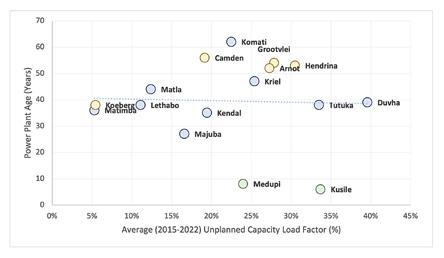
Is there a quick fix to South Africa’s loadshedding woes? The short answer is no…
The long-term impacts of the mismanagement, poor maintenance, sabotage, and general corruption at Eskom will take years to fix. Apart from the operational issues at the various power plants, the utility is massively in debt and continuous restructuring of the leadership at the helm of Eskom is not helping the process. The country’s only nuclear power plant, Koeberg, has been taken offline for refurbishment and extension of operation, but has been plagued with delays and other operational hurdles.
Opinions are being voiced that Eskom should invest less in additional renewable capacity (which requires a large-scale investment into the grid) and more into fixing and extending the lifetime of the existing coal fleet, with Eskom unable to fund both simultaneously. While this makes sense for a short-term fix, the country needs to look at the issue long-term.
South Africa increasingly relies on investment from the developed world, pushing the green energy transition agenda (and rightfully so), necessitating the country to adjust its longterm objectives. The existing coal fleet’s average age is 40+ years, and the associated costs to install emission-capturing technology to adhere to globally agreed standards are far beyond Eskom’s current financial capabilities. The age of coal-powered generation is ending, and while complete reliance on only a select
few technologies is undoubtedly not advisable (see Europe’s natural gas dilemma in early 2022), green technology is the future.
Demand side
While fixing the supply side will take time, there has been significant activity in managing the demand side this year. Many South African households and businesses are moving to solar rooftop installations to offset their demand from the grid. Eskom has recently released statistics indicating that the country’s installed solar rooftop PV capacity has increased from 983 MW in March 2023 to 4 412 MW in June 2023, representing a growth rate of 349%.
This has been fundamental in ensuring the country is not plunged into a nationwide blackout. It has allowed the public utility to lower loadshedding stages and provided it with crucial time to conduct maintenance on its ailing coal power fleet and restore its pumped hydro and diesel storage.
The increase in solar rooftop installation is expected to grow substantially over the

next five years as municipalities will begin implementing feed-in tariffs (Cape Town has already started) for all small-scale embedded generation systems (SSEG), further alleviating loadshedding. However, increases in feed-ins will necessitate economies of scale as the hours of loadshedding, monthly access fees, and once-off feed-in meter costs are still too high for the average consumer to justify or enable the ability to feed electricity to the grid.
No short-term fixes
While there are no short-term fixes to South Africa’s loadshedding woes, encouraging signs point towards a brighter future. The nation's ability to confront and address the issues that led to this dilemma has spurred a shift towards positive change, with more investments into renewable energy technologies being attracted to the country as reforms are being implemented.
The dramatic increase in solar rooftop installations has emerged as a gamechanger, empowering households and businesses to contribute to the energy supply and alleviate pressure on the grid. This transition to renewable energy reduces reliance on traditional coal powered generation, enhances energy security, and paves the way for a more sustainable future.
As South Africa embraces green technology and fosters a culture of energy conservation, it stands poised to overcome the loadshedding challenges that have plagued it for years. The journey ahead might be demanding, but the nation's determination to transform its energy landscape offers a beacon of hope for a resilient and vibrant future; it is evident that the momentum is building.
IMIESA September 2023 39
FIGURE 3 EAF, UCLF and PCLF by year, including annual average loadshedding stages
*Consultant, Frost & Sullivan Africa
RENEWABLE ENERGY & ELECTRIFICATION
FIGURE 2 Correlation analysis between unplanned breakdowns (average between 2015 – 2022) and age of power plants
BOARDWALK HOTEL
Gqeberha (Port Elizabeth)
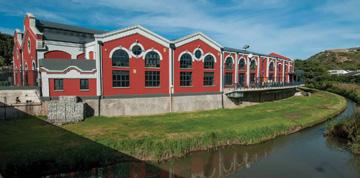
BOOK NOW! CONFERENCE SOCIAL ACTIVITIES






GOLF DAY

Contact Debbie Anderson if you want to get involved as an IMESA Golf Day Sponsor?

DATE: 24 October 2023
VENUE: Humewood Golf Course

TIME: Starts at 10h30
COST: R600pp (excluding Golf Cart & Caddy)

COMPANION PROGRAMME

2½ Days O -site Ladies Programme @ R1,600pp


DAY 1: Township Tour (The tour covers a visit to 4 community upliftment projects and a number of historical & cultural sites. Lunch included)
DAY 2: Theescombe Wine Estate (Enjoy a walk through the vineyard and a talk on wine making with a tutored tasting of 4 wines. Lunch included)

DAY 3: Painting with Grapes (A 3-hour painting class with all equipment provided. Your artwork goes home with you. Light snack provided)
SOCIAL EVENING
DATE: 26 October 2023





VENUE: Tramways Building
TIME: Starts at 18h30
COST: Included in delegate fee


Theme: Denim & T’s
For more information, contact Debbie Anderson on 031 266 3263 / conference@imesa.org.za

t: +27 (031)266 3263



e: conference@imesa.org.za

marketing@imesa.org.za



www.imesa.org.za

IMESA ORGANISER THE INSTITUTE OF MUNICIPAL ENGINEERING OF SOUTHERN AFRICA (IMESA) CONFERENCE ENDORSED BY
86
IMESA Conference
25-27 October 2023
TH
OFFICE WASTE SEGREGATION QUALIFIES FOR CARBON OFFSETS
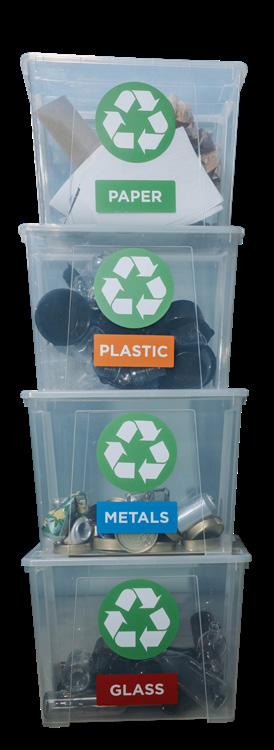
The recycling centre has also created full-time employment for a disabled individual from a disadvantaged background,” explains Sonja de Klerk, Lead of Quality, Environment and Sustainability. “This innovative approach enables us to promote a circular economy and climate change awareness simultaneously.”

Gold Standard was established in 2003 by the World Wildlife Fund (WWF) and other international NGOs to ensure projects that reduce carbon emissions adhere to the highest levels of environmental integrity and contribute to sustainable development.
The so-called Gold Standard for the Global Goals was launched with the adoption of the Paris Climate Agreement and the Sustainable Development Goals, a best practice standard for climate and sustainable development interventions.
While the purchased offsets will not make Zutari entirely carbon neutral, it is sufficient to offset any emissions produced
in several countries where the company operates for the 2022 financial year, explains de Klerk. The carbon footprint for the 2023 financial year (ending 30 June 2023) will be calculated soon, and Zutari again plans to procure carbon offsets with funds generated through recyclable waste.
Zutari and its heritage company have measured their carbon footprint since 2014. They have conducted various campaigns to sensitise staff about the emissions they produce through their daily work and how these can be reduced. “The first prize is always to avoid or reduce emissions, rather than offsetting them afterwards,” highlights de Klerk.
Scope 1 and Scope 2 emissions
However, emission avoidance is not always possible. Zutari has therefore begun the journey to offset its Scope 1 and Scope 2 emissions. The Gold Standard projects selected by Zutari for offsetting purposes reveal its commitment to the continent and its people.
For example, the Kenya Biogas Programme supports Kenya’s endeavours to develop a commercially viable biogas sector. It facilitates the funding of biodigesters for families, particularly in rural environments. Domestic biodigesters provide a way for households with livestock
to reduce their dependence on polluting firewood and expensive fossil fuels.
In the longer term, Zutari plans to expand the offsetting of the carbon emissions arising from its operations. However, the most significant impact it can have on climate change and the circular economy approach remains through its projects.
IMIESA September 2023 41 WASTE MANAGEMENT
The Tshwane office of leading consulting engineering and infrastructure advisory firm, Zutari, practices waste segregation at the source. The funds from this recyclable waste have enabled it to purchase carbon offsets for some greenhouse gas emissions from the reputable Gold Standard.
Sonja de Klerk, Lead of Quality, Environment and Sustainability at Zutari
SITE VISITS HELP CCSA MEMBERS MAINTAIN QUALITY IN CONSTRUCTION
Among the wide range of concrete-related services Cement & Concrete SA (CCSA) offers the industry are on-site visits by technical staff.
Hundreds of such significant consulting assignments –providing substantial time and cost-savings for the client – have already been undertaken over many decades by CCSA and its predecessors.
John Roxburgh, CCSA technical specialist, says site consulting by CCSA typically takes the form of a site visit and discussions, followed by the provision of a detailed report, signed off by a professional engineer.
“CCSA does not offer design input for construction projects but offers consulting services on current and post construction
CCSA CEO, Bryan Perrie, undertaking a site inspection and concrete pavement analysis
work and materials, concentrating on problems experienced with the concrete in the structure,” Roxburgh explains.
“For example, CCSA CEO, Bryan Perrie –whose speciality is concrete on the ground –is often asked to visit a site to inspect floor or pavement cracks and write a full report on what he observed, why he thinks the cracks have formed, and how the problem could be resolved.”

“Over 95% of all consulting work done by CCSA relates to industrial floors, concrete pavements and sand-cement screeds. These fields tend to be exceptionally problematic in South Africa,” Roxburgh states.
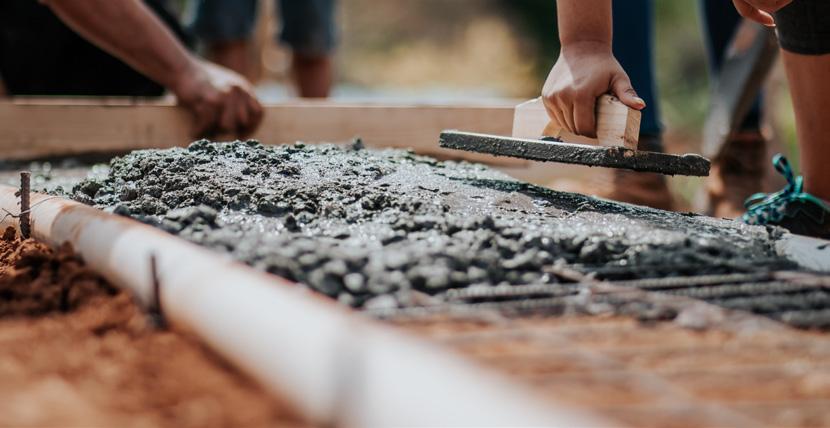
Structural concrete
Another CCSA professional engineer, Gary Theodosiou, specialises in structural concrete, and also undertakes site visits. Concrete failure in structures such as reservoirs are typical problems Theodosiou deals with.
Roxburgh says industrial floors and structural concrete are the two fields that form the nucleus of CCSA site consultations, although other aspects of concrete construction and technology are also dealt with.
“CCSA usually, after on-site investigation visits, provides a review of the specifications and structural design (if applicable), a review of the concrete mix design and any
data pertaining to it such as strengths and durability index testing results, and a historical overview of the construction process and site practices implemented,” Roxburgh expands.
“In all instances, CCSA remains a strictly neutral party that produces unbiased reports. In other words, no report will ever favour a particular client or member but instead gives an honest assessment of what was observed and regarded as important during site visits.”
CCSA consultation fees
CCSA charges for site consultations, with members receiving discounts depending on their level of membership.
CCSA site consulting also includes BRE screed testing to assess if the screeds were adequately compacted and to determine their probable performance in use. This aspect of site consultations is handled by Matthews Magwaza, a long-serving and experienced lecturer at CCSA’s School of Concrete Technology.
“Often there is close collaboration between the CCSA staff handling site visits or other queries and the queries received by the CCSA Information Centre in Midrand, which has the most extensive information collection on concrete in Southern Africa. The CCSA information specialist in the library and the technical specialists then collaborate to deal with members’ site problems,” Roxburgh adds.
For further information on site consultations, contact CCSA on +27 (0)11 315 0300 or email lore.debernier@cemcon-sa.org.za. Alternatively, visit www.cemcon-sa.org.za
CEMENT & CONCRETE
42 IMIESA September 2023
The
specialised cement and construction materials laboratory at AfriSam’s Centre of Product Excellence (CPE) in Roodepoort, Gauteng, has once again earned the SANAS stamp of approval. The laboratory conducts in-depth testing and investigation across a range of processes and materials.


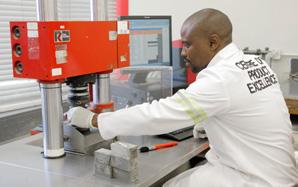
AfriSam lab passes SANAS recertification
WITH FLYING COLOURS
Remaining certified within stringent SANAS requirements – which in turn align to international ISO/IEC 17025 management system standards – ensures that AfriSam’s laboratory is world class,” explains AfriSam CPE manager, Mike McDonald, adding that the demanding recertification process is conducted every five years.
A recent enhancement of the global standards – and applied in turn by SANAS – is its risk-based approach. Among these is the risk of bias during the testing process, which is addressed by strictly protecting the anonymity of the test work. The CPE laboratory uses a numbering system to ensure that analysts are not aware of the names of companies that submit samples for testing.
“The recertification is by no means easy or simple, requiring extensive internal and external training of all our 22 laboratory
personnel,” says McDonald. “In maintaining these high standards, it is clear that our highly skilled staff are committed to our quality mission.”
Hi-tech instrumentation
The laboratory’s instruments, technology and skills complement make it one of the country’s most specialised facilities for testing cement and construction materials. Equipment includes a microcalorimeter for measuring heat from concrete samples, and instruments for thermal gravimetric analysis for measuring material weight during heating.
“The laboratory gives AfriSam enviable capability on various levels – from proving up our theoretical concrete mix designs for customers to investigating any challenges that contractors might be facing with their concrete on site,” McDonald continues. “Our research and testing also provides innovative solutions for customers, such as reducing or removing the need for costly steam generation for curing concrete products.”
A
quality result
Being able to conduct laboratory-scale
testing of new mixes is a significant advantage for customers like concrete product manufacturers, he points out. If they test unproven mix designs in their production process, there could be considerable trial and error. This invariably produces wastage of material and labour time, whereas the AfriSam laboratory can accurately predict results while not disrupting on-site production.
Cement testing remains a central focus of the laboratory’s work, including oxide analysis and testing for gypsum content, as well as fineness and strength of cement. AfriSam has also relied heavily on the laboratory for its ongoing drive to reduce the carbon footprint of cement, allowing the development of a product with 40% less carbon impact than pure cement.
“The SANAS recertification of our laboratory is an important foundation for the accuracy and reliability of all our testing and research work. This assures customers and the broader industry of AfriSam’s ongoing commitment to quality standards that match the world’s best,” McDonald concludes.
CEMENT & CONCRETE
A large part of the laboratory’s value is its specialisation, with specific focus on elements such as cement,
concrete, aggregates and admixtures
The SANAS recertification of AfriSam’s laboratory reassures the industry and customers that the company remains committed to upholding global standards
IMIESA September 2023 43
The alignment with SANAS guidelines from ISO/IEC 17025 meant considerable internal and external training for AfriSam’s laboratory staff
50 years
of best practice in precast
This year, the Concrete Manufacturers Association (CMA) celebrates its half century following the organisation’s original founding in 1972 as the Concrete Block Association. The CMA’s first full-time director, John Lane, was appointed in 1982 and its acclaimed Awards for Excellence competition launched in 1985.
Lane was one of the country’s foremost masonry and paving experts and under his stewardship the CMA adopted a strong technical bias, conducting independent research into and publishing technical literature on applied precast concrete. And thanks to its close working relationship with the South African Bureau of Standards, most of today’s standards regulating the production and application of precast concrete products were established.
Lane was succeeded by Patrick Kelly in the 1990s and John Cairns took the helm in 1997. Cairns was subsequently succeeded by Hamish Laing (2010-2013), Wally Armstrong (2013-2015), and Frans Minnaar (2015-2018) with the current incumbent, Henry Cockcroft, registered as a director in 2018.
Progressive gains
During his time in office, Armstrong embarked on a new membership recruitment drive. He was also instrumental in streamlining the association’s six operating divisions into two operational pillars, namely Precast Building and Precast Infrastructure, and this assisted in broadening the membership base and attracting new members.
However, by the time Minnaar succeeded Armstrong in 2016, many CMA producer members had grown dissatisfied with the certification of their products. This prompted Minnaar to found a specialist precast concrete certification body, CMACS (Concrete Manufacturers Association Certification Services), which was accredited by SANAS (South African National Accreditation System) in 2017. Its subsequent success has contributed substantially to the sustainability of the CMA.
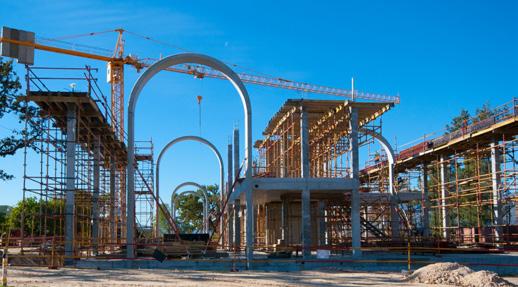

Communications
Taking the reins from 2018, Cockcroft initiated
a well-defined strategy that strengthened communication ties between the CMA and the built environment and saw the appointment of the CMA’s first digital marketing expert, Liandre Bezuidenhout in 2019. He has played a major role in establishing the association’s social media channels, an initiative which has paved the way for a new era of operation and communication.
Bezuidenhout was also instrumental in converting the CMA Awards for Excellence competition into a digital extravaganza. Unprecedented levels of reach into the digital built environment and associated industries were achieved during the 2022 competition, making it by far the association’s most successful marketing exercise to date. The CMA is currently embarking on its 18th Awards for Excellence competition, which will be showcased towards the end of 2024.
Post Covid
The Covid pandemic in 2020 saw a huge shift in the CMA’s business model. Its central office premises were permanently closed and the association transferred its communication and marketing arms onto digital platforms.
During the same year the Association also played a pivotal role in collaborating with other stakeholders to form the Rapid Response Task Team, a body which successfully lobbied government to switch the cement and construction industry from Level 1 lockdown status to Level 4. Another milestone was achieved in 2021 when CMACS expanded its product certification service to include ISO 9001 certification.
“We will maintain our upward momentum and will always endeavour to ensure that we and our members operate to best practice standards,” Cockcroft concludes.
Seven Roman styled precast concrete arches were supplied by Concrete Manufacturers Association (CMA) member, Cape Concrete, for the construction of a new facility at Bacco Estate Winery near Paarl. Entered for the CMA’s 2022 Awards for Excellence competition, the project was one of only four trophy winners
44 IMIESA September 2023 CEMENT & CONCRETE
A section of the completed Bacco Estate Winery facility
Battery powered forklifts are the future
efficiencies and return on investment (ROI), sustainability, and driver comfort. In terms of the latter, electric forklifts exhibit zero vibration, and their noise levels are less than that of an ICE forklift, making them far more comfortable to operate.

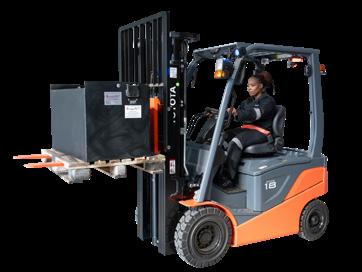
The cost equation
Typical market growth has been sitting at between two and three percent, mostly due to customers shifting from traditional internal combustion engine (ICE) forklifts to battery operated units.
Last year, however, growth was measured at 5%, a significant increase that exceeded the division’s expectations. This increase was driven predominantly by the adoption of lithium-ion battery operated forklifts, which are now responsible for around 80 percent of sales versus their lead acid battery counterparts.

“Battery technologies have come a long way in the past few years. Where lead acid battery technology might have held back the adoption of battery operated forklifts –due mainly to the rate of discharge and the maintenance required for these batteries – lithium-ion is now propelling the market. This has been augmented by business cycles, such as the largescale fleet replacements that occur every three to four years,” says Brent Light, national product manager for Toyota Material Handling: Counterbalance Equipment.
He says the trend is being driven by three main benefits. These comprise greater
The evidence shows that ICE forklifts are more expensive to run. Whereas fuel for an ICE truck costs between R20 and R25 per litre, electricity for battery operated equipment costs just R1,50 per kilowatt.
“Therefore, in all applications, even though the upfront costs may be high, lithium-ion will eventually result in a cost saving. This saving can be delayed in some very low utilisation applications, so it might not always be justifiable to the business. However, with a high or medium intensity operation, ROI will be realised fairly quickly – within 24 to 36 months you will see significant savings,” says Light.
ROI is also realised through the cost of maintenance, which is a lot less on an electric forklift. It has fewer moving components, so less can go wrong, and tyre wear is also reduced because it is almost impossible to create wheel spin.
Going green
As the world looks towards a more sustainable future, more businesses are being guided by regulations to reduce carbon emissions. For example, in applications such as food handling, businesses can no longer use LPG units, a stipulation of new legislation that came into effect in 2020.
Furthermore, ICE forklifts expel diesel and gas emissions, and a lead acid battery emits gases when charged. With the use of lithium-ion batteries, emissions are eliminated, resulting in a cleaner and more environmentally conscious working environment.
Adoption
“While we are focused on growing the electric market, most businesses still use ICE forklifts, and will do so for some time. The move towards electric forklifts is happening slowly, but as battery powered machinery becomes more capable in handling difficult environments, adoption should speed up,” Light continues, emphasising that each application is industry specific.
For example, in a brickyard or concrete facility, using electric forklifts might be a drawback, as they don’t have the extra power provided by ICE forklifts, and since the work area is mainly outdoors, the emissions requirements will most likely not be as stringent.
“There are also certain applications where lead acid battery technology is still viable, and lithium-ion potentially less. However, we do find customers moving to lithium-ion because of the maintenance benefit, even when they don't require the longer lifespan or the longer operating time. With lithium-ion batteries they do not need to worry about topping up water levels, and if they need to short-charge, they can do so without any impact on the battery,”
IMIESA September 2023 45
VEHICLES & EQUIPMENT
Brent Light, national product manager for Toyota Material Handling: Counterbalance Equipment, a division of CFAO Equipment SA
Over the past few years, Toyota Material Handling, a division of CFAO Equipment SA that sells forklifts and related solutions, has seen a steady increase in demand for battery operated equipment.
IMESA AFFILIATE MEMBERS












































































































PROFESSIONAL AFFILIATES
MESA IMESA
AECOM
siphokuhle.dlamini@aecom.com
AFI Consult banie@afri-infra.com
Alake Consulting Engineers
lunga@alakeconsulting.com
ARRB Systems info@arrbsystemssa.com
Asla Construction (Pty) Ltd
johanv@asla.co.za
BMK Group brian@bmkgroup.co.za
Bosch Projects (Pty) Ltd mail@boschprojects.co.za
BVI Consulting Engineers marketing@bviho.co.za
CCG puhumudzo@ccgsytems.co.za / info@ccgsystems.co.za
Corrosion Institute of Southern Africa secretary@corrosioninstitute.org.za
Dlamindlovu Consulting Engineers & Project Managers info@dlami-ndlovu.co.za
EFG Engineers eric@efgeng.co.za
Elster Kent Metering Mark.Shamley@Honeywell.com
EMS Solutions paul@emssolutions.co.za
ERWAT mail@erwat.co.za
ESCONGWENI BPH ENGINEERS (PTY) LTD info@escbph.co.za
Gabion Baskets mail@gabionbaskets.co.za
GIBB marketing@gibb.co.za
GIGSA secretary@gigsa.org
GLS Consulting info@gls.co.za
Gorman Rupp Cordeiro@gormanrupp.co.za
Gudunkomo Investments & Consulting info@gudunkomo.co.za
Hatch Africa (Pty) Ltd info@hatch.co.za
HB Glass Filter Media info@hardybulkinglass.com
Herrenknecht schiewe.helene@herrenknecht.de
Huber Technology cs@hubersa.com
Hydro-comp Enterprises info@edams.co.za
Infrachamps Consulting info@infrachamps.co.za
INFRATEC info@infratec.co.za
IQHINA Consulting Engineers & Project Managers info@iqhina.co.za
iX engineers (Pty) Ltd hans.k@ixengineers.co.za
Izinga Holdings info@izingalabezi.co.za
JBFE Consulting (Pty) Ltd issie@jbfe.co.za
JG Afrika DennyC@jgafrika.com
KABE Consulting Engineers info@kabe.co.za
Kago Consulting Engineers kagocon@kago.co.za
Kantey & Templer (K&T) Consulting Engineers ccherry@ct.kanteys.co.za
Kitso Botlhale Consulting Engineers info@kitsobce.co.za
KSB Pumps and Valves (Pty) Ltd salesza@ksb.com
KUREMA Engineering (Pty) Ltd info@kurema.co.za
Lektratek Water general@lwt.co.za
Loshini Projects muzi@loshini.co.za
Makhaotse Narasimulu & Associates mmakhaotse@mna-sa.co.za
Mariswe (Pty) Ltd neshniec@mariswe.com
Martin & East gbyron@martin-east.co.za
M & C Consulting Engineers (Pty) Ltd info@mcconsulting.co.za
Mhiduve adminpotch@mhiduve.co.za
MPAMOT (PTY) LTD mpumem@mpamot.com
Mvubu Consulting & Project Managers miranda@mvubu.net
Nyeleti Consulting naidoot@nyeleti.co.za
Odour Engineering Systems mathewc@oes.co.za
Prociv Consulting & Projects Management amarunga@prociv.co.za
Rainbow Reservoirs quin@rainbowres.com
Re-Solve Consulting (Pty) Ltd maura@re-solve.co.za
Ribicon Consulting Group (Pty) Ltd info@ribicon.co.za
Royal HaskoningDHV francisg@rhdv.com
SABITA info@sabita.co.za
SAFRIPOL mberry@safripol.com
SAGI annette@sagi.co.za
SALGA info@salga.org.za
SAPPMA admin@sappma.co.za / willem@sappma.co.za
SARF administrator@sarf.org.za.co.za
SBS Water Systems marketing@sbstanks.co.za
Silulumanzi Antoinette.Diphoko@silulumanzi.com
Siroccon International (Pty) Ltd admin@siroccon.co.za
SiVEST SA info@sivest.co.za
Sizabantu Piping Systems (Pty) Ltd proudly@sizabantu.com
Siza Water (RF) Pty Ltd PA@sizawater.com
Sky High Consulting Engineers (Pty) Ltd info@shconsultong.co.za
SKYV Consulting Engineers (Pty) Ltd kamesh@skyv.co.za
Smartlock jp.alkema@smartlock.net
SMEC capetown@smec.com
SOUTH AFRICAN VALUE EDUCATION Sabiha@savegroup.co.za
Southern African Society for Trenchless Technology director@sasst.org.za
SRK Consulting jomar@srk.co.za
Star Of Life Emergency Trading CC admin@staroflife.co.za
TPA Consulting roger@tpa.co.za
V3 Consulting Engineers (Pty) Ltd info@v3consulting.co.za
VIP Consulting Engineers esme@vipconsulting.co.za
VNA info@vnac.co.za
Water Institute of Southern Africa wisa@wisa.org.za
Wam Technology CC support@wamsys.co.za
Wilo South Africa marketingsa@wilo.co.za
WRCON ben@wrcon.co.za
WRP ronniem@wrp.co.za
Zutari Rashree.Maharaj@Zutari.com
GAUTENG SAND OPERATION RAMPS UP PRODUCTION
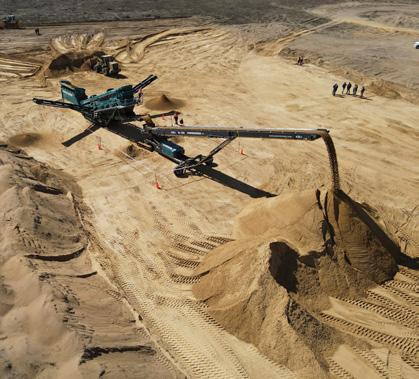
In the space of just under three years, Jongiliziwe Sand Mine has grown to become a thriving business supplying high quality plaster and building sand for the Sasolburg region, as well as further afield in key centres that include Johannesburg and Ekurhuleni, led by founder and managing director, RJ Mabefu.
Central to the start-up operation was a Powerscreen Warrior 600, supplied and supported by ELB Equipment (ELB). Subsequently, this has led to further acquisitions supplied by ELB to meet production ramp-ups that include a Powerscreen Chieftain 2200, three Lovol FL958H, FL966H and FL978H front end loaders, a Dressta TD20M dozer and a CT75R Powerscreen radial stockpile conveyor.
From a production perspective, the Powerscreen Chieftain 2200 is a major strategic addition. This two-deck screen is designed for operators who require large volumes of high specification products with maximum versatility.

The unit features two double deck screen boxes that provide a total screening area of 19,5m2 and a revolutionary patent pending drive system, which allows switching between 2 and 4 bearings with bolt-on parts.
User benefits include a quick set-up time (typically under 30 minutes) with hydraulically folding conveyors and track mobility. Additionally, its high aggression screen boxes handle dirty, sticky material with ease.
The Powerscreen Chieftain 2200 acquired by Jongiliziwe Sand Mine is central to its current and future operational expansion
IMIESA September 2023 47
VEHICLES & EQUIPMENT
SOLAR POWERED LIGHT TOWER PROVIDES SUSTAINABLE SOLUTION
Powered by the sun, Atlas Copco’s HiLight S2+ LED light tower consumes zero fuel and emits zero emissions or noise.


LED technology
Atlas Copco’s innovative LED technology is incorporated into its complete LED light tower range. By applying an innovative, fully directional LED lens design, Atlas Copco’s engineers have maximised the light coverage while reducing “lighting waste”. The LEDs’ lifespan of 50 000 hours further maximises uptime and productivity, while reducing replacement costs and maintenance requirements. Additionally, the lenses in the S2+ tower feature a very special optic that is designed specifically for construction and mining applications.
Compared with traditional diesel driven technologies, the S2+ enables users to reduce CO2 emissions by up to six tonnes, assisting them to sustainably comply with carbon emissions, as well as noise regulations. This cutting-edge, ultra-efficient light tower’s four 90W LED floodlights deliver a market leading 2 000 m2 light coverage at an average of 20 luxes. This excellent visibility creates a bright, safe, and productive work environment in gloomy conditions and after sunset.
“Our versatile, next generation solar light tower can operate autonomously for up to eleven hours at 100 percent operation where solar yield is greater than energy demand,” notes David Stanford, Atlas Copco Power Technique’s business line manager - Portable Products, adding that the S2+ unit’s batteries can be recharged using solar energy or an external power source, which takes approximately eight and three hours respectively.
“The tower is equipped with a dimming function that prevents light and energy
from being wasted unnecessarily, further increasing autonomous operation to meet lighting requirements for long work shifts,” Stanford continues.
HiLight S2+ solar light tower can operate autonomously for up to 11 hrs at 100 percent operation
Set-up and operation of the user-friendly, ergonomically designed light tower is quick and effortless; once easily manoeuvred into position, the extendible solar panels are simply pulled out from the pop-up canopy and adjusted to best align with the sun’s position for maximum solar yield. There are no external cables, and the external control panel further facilitates operation.
APE Pumps | Mather+Platt 14 Cement & Concrete SA OBC Envitech 19 Gabion Baskets OFC, 6 IMESA 2, 40 & 46 SAPPMA 13 Sizabantu Piping Systems IFC Terraforce 25 Xylem 4 INDEX
TO ADVERTISERS
Atlas Copco’s
VEHICLES & EQUIPMENT
48 IMIESA September 2023
The HiLight S2+ tower’s extendible solar panels are pulled out from the pop-up canopy and aligned with the sun’s position



















































































The official magazine of the Institute of Municipal Engineering of Southern Africa IMESA INFRASTRUCTURE DEVELOPMENT • BUILDING • MAINTENANCE SERVICE DELIVERY • UTILITIES MANAGEMENT • ROADS • ENERGY OUR READERS ARE YOUR BUYERS Contact us for content marketing opportunities across print and digital platforms. www.imesa.org.za IMIESA , weekly newsletters , social media posts and www.imesa.org are the platforms used by your target audience for information on infrastructure development, maintenance and service delivery. Our readers are key decision-makers in the industry. TO ADVERTISE Joanne Lawrie c +27 (0)82 346 5338 e joanne@infraprojects.co.za TO SUBSCRIBE e info@infraprojects.co.za IMESA imesa_za imesa



























































































 Aerial view of Yusufeli Dam reservoir impoundment
Aerial view of Yusufeli Dam reservoir impoundment













































 By Chetan Mistry
By Chetan Mistry


































































































